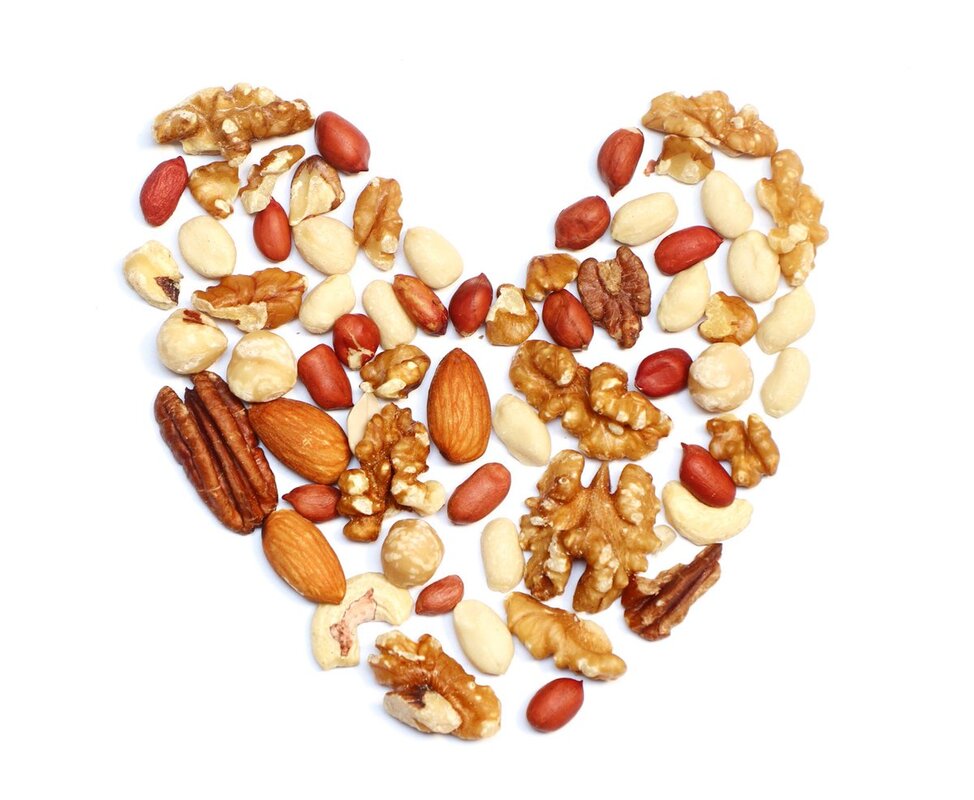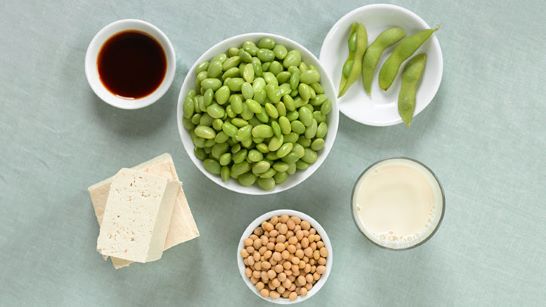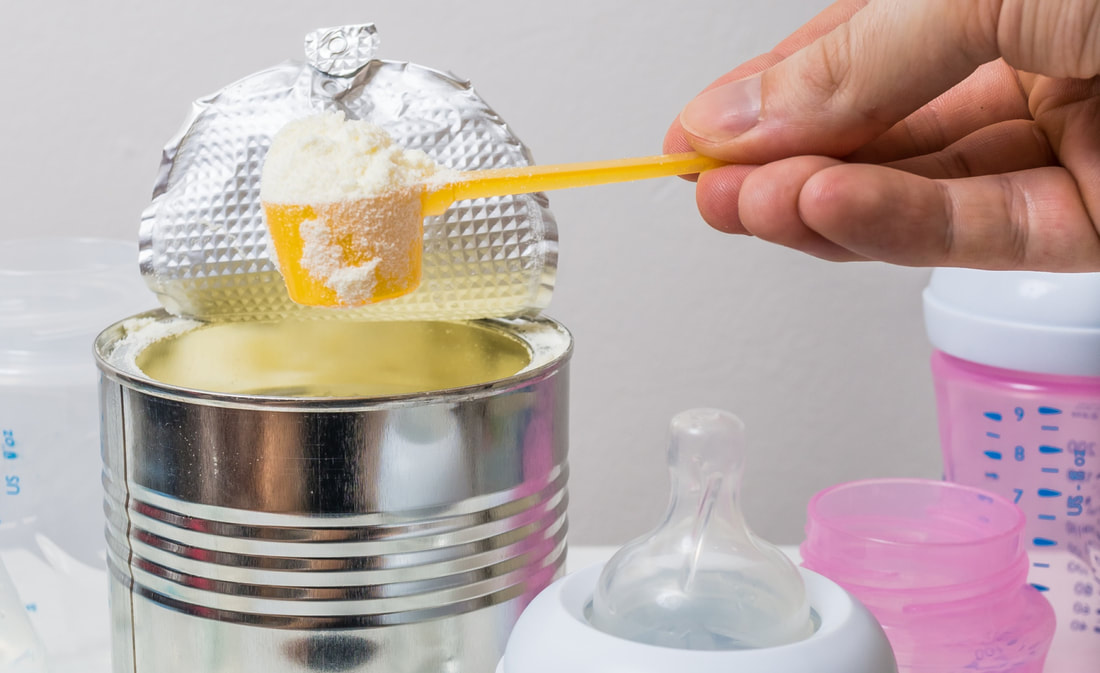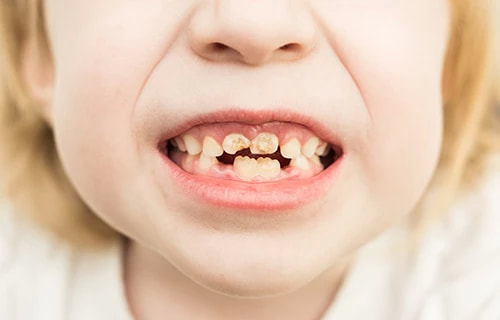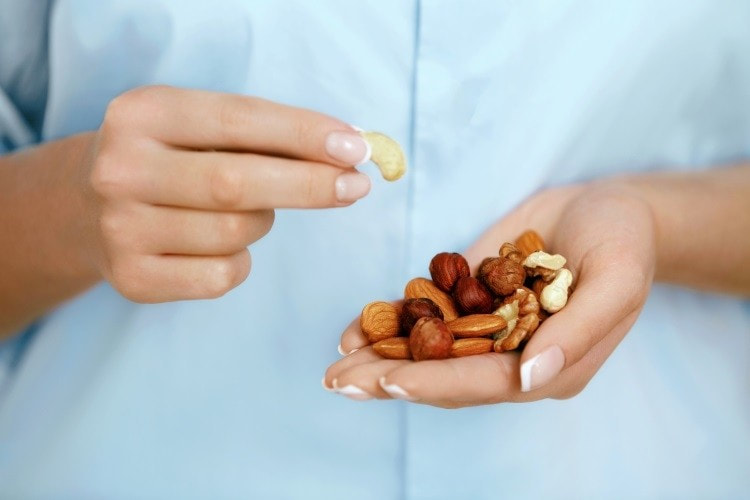Decreased Stress Levels Offer More than Peace of Mind, A Decreased Intake of Unhealthy Foods Too!10/31/2019
 Self-efficacy Optimizes Healthy Eating Habits Self-efficacy Optimizes Healthy Eating Habits Stress reigns supreme in present-day world and humans are ready to give anything to overcome it. They don’t mind spending thousands of rupees for a relaxing spa, long for an annual holiday in a five-star holiday resort after working their ass off during the rest of the year or don’t mind shelling out money for a rejuvenating yoga or meditation session in the foothills of the Himalayas. Some others succumb to comfort eating or binge eating to address stress which can lead to multiple health issues including obesity and overweight problems. Stress is a complex physiological state that includes a range of physiological and behavioural processes that occur when there is a real or perceived threat to homeostasis. Stress is often related to work pressure, economic crunches, family problems, increased responsibilities and other such cases that can impact several aspects of life including physical, behavioural and psychiatric manifestations. Getting a new job is satisfactory but the pressure to scale great heights brings on stress; admission into a reputed college is exciting but accommodating to the new routine, hostel life and academic workload, especially for medical students, causes sleep deprivation, stress and drastic modifications in eating habits. Changes in eating habits that include unhealthy food practices increase the risk of chronic diseases. But stress indeed increases the consumption of high-fat and processed foods that are high in sodium levels too. But why? That’s mainly because of the release of cortisol hormones that increase the intake of high fat foods to overcome stress. An animal study found rewarding properties of sugary foods on providing stress relief and also the fact that long-term intake of dietary fats and their removal thereon can promote stress-related outcomes. Yet another study found that high-stressed women opted for high-fat food compared to low-stressed women. Impact of Low Stress Levels on Lower Fat & Sodium Intake Adolescents and youngsters generally are in the habit of consuming more processed foods compared to other groups of people. These are also the category of individuals who love to live a sedentary lifestyle. The young adult population around the world which includes the North American population too ingest more fat and sodium that’s above proclaimed health limits. Health Canada postulates that 25% of males and 23% of females above the age of 19 consume fat above recommended levels. Also, 99% of males and 73% of females aged 19-30 years consume more than the maximum permitted levels of 2300 mg of sodium per day. It is not something new that this population enjoys eating processed foods as it is tasty, convenient and easy but studies behind increased intake of such foods also show that stress increases poor eating behaviour especially among the young adult population. While most studies showed an association between increased stress and increased intake of fat- and sodium-rich foods there are also a few studies that show that increased stress causes decreased intake of such foods. Hence, self-efficiency exists as an important factor to consider when it comes to stress and food intake. Self-efficacy is the ability of the individual to manage a demand in the presence of obstacles. Lower levels of stress result in greater self-efficacy among individuals. Various studies have led to different conclusions with regard to stress, nutrient intake and self-efficacy that are not constrained to food intake behaviour and only one study has assessed the role of diet self-efficacy in the relationship between stress and food intake. This study showed that women reported lower diet self-efficacy and greater levels of stress compared to men and, obese individuals had lower self-efficacy compared to normal-weighted participants. The study below helps us understand the role of stress on fat and salt intake and how self-efficacy alters this in young adults. A 15-item questionnaire was used to mark down values relating to demographic information of participants such as age, sex, height, weight, etc. A 20-item diet self-efficacy questionnaire tested his/her ability to refrain from high-fat and high-sodium foods despite such items being present in front of the participant on a scale of 0-100. Another 10-item questionnaire helped measuring self-efficacy on a score of 0-40. Stress was measured with a potential score of 56 using a 14-item self-report questionnaire. A 17-item questionnaire evaluated an individual’s fat intake over a 1-month period and a 28-item questionnaire evaluated an individual’s sodium intake over a 1-month period. 130 (19 males and 111 females) individuals participated in the study and the participants were undergraduate students from the Ryerson University in Toronto. The average age of participants was 20.62 years and 85% of them were females. Results showed that:
Relationship between Stress & Fat Intake in Medical Students Doctors are saviours of our lives and medical students face increased levels of psychological distress compared to other groups of students due to reasons such as academic pressure, sleep deprivation and workload. A cross-sectional study was conducted in undergraduate students who were asked to self-report on the amount of fat intake. There were 15 questions probing on the eating habits of the participants over the past year with a list of foods high in fat content. Every question had 5 options (less than once per month, 2-3 times per month, 1-2 times per week, 3-4 times per week and ≥5 times per week) scored from 0 to 4 points. Total score was calculated by adding individual responses and then splitting them into two categories-low fat intake (<25 points) and high fat intake (>25 points). Participants with ≥27 points were considered to consume a diet with very high fat content. 14 items evaluated the perception of stress during the last month with 5 options of response for each question-never, almost never, sometimes, fairly often and very often. Score ranges were from 0 to 56 with higher score ranges indicating higher levels of perceived stress. A total of 523 students (272 of them were females) with a mean age of 19 years participated in the study and their overall mean level of perceived stress was 25.9-18.8 in the low group and 26.7 in the high stress group. 42.4% participants displayed high fat intake and 30.4% reported very high fat intake-males (47.4%) ate more fatty foods than females and younger (62.9%) participants consumed more high-fat food comparatively. The proportion of subjects consuming more fatty food was predominant among those in the highest tertile of stress category (53.2%) compared to those in the middle tertile (46.3%) and lowest tertile (28%). This study shows that increased stress levels was associated with higher fat intake and more than 40% students reported high fat consumption. References A Survey of Diet Self-efficacy & Food Intake in Students with High & Low Perceived Stress: https://nutritionj.biomedcentral.com/articles/10.1186/s12937-015-0026-z Perceived Stress & High Fat Intake: A Study in a Sample of Undergraduate Students: https://journals.plos.org/plosone/article?id=10.1371/journal.pone.0192827 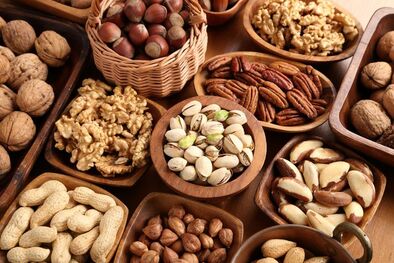 Choose your Favorite Tree Nut to Snack Upon Choose your Favorite Tree Nut to Snack Upon If you consider nuts as yet another calorie-rich junk food then there is no harm in saying that you have gone nuts over your dietary intake! If you ponder, nuts are an excellent source of proteins, healthy fats, dietary fiber, minerals and vitamins that add good health and nutrient benefits. In-depth analysis of various cohort studies shows us that frequent nut consumption is associated with a reduced risk of developing hypertension, cardiovascular disease (CVD), cancer and all-cause mortality. It’s no news that CVD exists as one of the topmost causes of death globally and our current lifestyle remains as the number one reason. Individuals affected by CAD receive medications to protect them against recurring cardiac events alongside lifestyle changes too that include regular physical activity, a low-fat plant-rich diet and quitting smoking. But rather than making such lifestyle changes after being affected by heart-relate health issues isn’t it clever to prevent them in the first place with proper dietary routines and physical activities? Men have been in love with meat as theoretically they assume that meat defines masculinity and this might also be the reason that we don’t find many of them sitting down with a bowl of green salad for their meal too. But in recent years, we have seen a shift in dietary recommendation from plant-based foods to animal-based foods as this helps in the prevention of chronic diseases. These plant-based diets have nuts as one their key components which is also a food that has been used for human consumption since ages. Humans have discovered innumerable nut varieties including Brazil nuts, almonds, pistachios, pine nuts, pecans, walnuts and macadamias with each variety having unique nutrients bestowed upon it. In general, these nuts provide energy, heart-healthy oils, vegetable protein, phenols, phytosterols, flavonoids, resveratrol and bioactive compounds which in combination with vitamin E and selenium serve as antioxidants that have the potential to reduce the risk of cardiovascular disease and cardiovascular risk factor (CVRF). We have studies showing that tree nut consumption has an inverse association with all-cause mortality and death due to heart disease. Other studies show that nut consumption is linked to healthier levels of CVRF including total cholesterol, low-density lipoprotein cholesterol (LDL-C), high-density lipoprotein cholesterol (HDL-C) and triglycerides. Read further to understand the impact of tree nuts on heart health. NHS Prospective Cohort Study This is a large study starting from 1976 that included 76,364 female nurses aged between 30 and 55 years from 11 different U.S. states. The NHS II commenced in 1989 consisting of 92,946 young female registered nurses aged between 25 and 42 years at baseline. Another cohort study, the HPFS that started in 1986 included 41,526 male health professionals aged between 40 and 75 years. Information regarding medical history, lifestyle and health conditions was collected using questionnaires every 2 years since baseline in all three studies. The primary outcome measure in these studies included major CVD defined as a combined endpoint of myocardial infarction, stroke and fatal CVD. Secondary outcome measures were total CHD (defined as fatal or non-fatal myocardial infarction) and total stroke (includes all fatal and non-fatal stroke cases). Dietary intake was assessed using a semi-quantitative food-frequency questionnaire (FFQ) with over 130 items administered every 2-4 years. During the years 1980 and 1984, the FFQ included a question on how frequently the participants consumed a serving of nuts during the previous year and the options included never or almost never, 1-3 times a month, once a week, 2-4 times a week, 5-6 times a week, once a day, 2-3 times a day, 4-6 times a day and more than six times a day. In the subsequent FFQ, the question on nuts was split into two items-peanuts and other nuts. Walnuts also became a part of the FFQ first in 1998 in the NHS and HPFS and in 1999 in the NHS II. Total nut consumption was considered as the intake of peanuts, other nuts and walnuts. The NHS, NHS II and the HPSF study had a follow-up period of 28.7, 21.5 and 22.5 years respectively during which a total of 14,136 cases of CVD including 8,390 CHD and 5,910 stroke cases were included. In comparison to those who never consumed nuts those who did consume more frequently were older, had a lower BMI, were less likely to smoke, likelier to exercise and consume more fruits and vegetables. Results showed that:
Nut Consumption Decreases CVD Risk in Patients with Type II Diabetes We do have studies quoting the benefits of tree nut consumption on heart health but there aren’t many linking its effect on individuals with type 2 diabetes. Individuals with diabetes mellitus at baseline (here participants from the same NHS and HPSF were included) and incident diabetes mellitus at follow-up through 2014 were included excluding those who has CVD or cancer at baseline, reported CVD or cancer before diabetes mellitus diagnosis during follow-up or had missing info on nut consumption at baseline. Hence, only 12,006 women with diabetes mellitus in the NHS and 4211 men with diabetes mellitus in the HPFS group were included. Dietary intake was analyzed using an FFQ with 131 food items administered every 2-4 years. Question on nut servings was the same as given in the study above. In the subsequent FFQs questions on nuts was split into 2 categories-peanuts and tree nuts such as walnuts, almonds, Brazil nuts, cashews, pistachios, pecans, macadamias, hazelnuts and pine nuts. Results showed that a total of 3336 CHD cases (including 2567 CHD cases and 789 stroke cases) and 5682 CVD (including 1663 CVD death and 1297 cancer deaths) were identified. Every serving/week increase in nut consumption was associated with a 3% lower risk of CVD incidence and 6% lower CVD mortality. 1 serving/week increase in tree nut consumption was associated with a 5% lower risk of CVD incidence and 11% lower risk of mortality. In comparison to participants without changes in nut consumption those who increased their nut consumption after diabetes mellitus had a 11% lower risk of CVD, 15% lower risk of CHD, a 25% lower CVD mortality and a 27% lower all-cause mortality. The study clearly shows that frequent consumption of nuts, especially tree nuts was associated with a lower risk of CVD incidence and mortality among participants with diabetes mellitus. Tree Nut Consumption & CVRF We don’t have much studies looking at tree nut consumption and CVRF and the study elaborated here focuses on this aspect using data from participants of the National Health and Nutrition Examination Survey (NHANES) 2005-2010. Dietary intake was evaluated using two multiple pass 24-h dietary recall. Height, weight, BMI, waist circumference, SBP, DBP, triglycerides, fasting glucose levels and insulin were determined on subjects. 14,386 subjects participated of which only 755 (6.8%) of them consumed tree nuts. Results showed that tree nut consumers had:
Nuts have a positive effect on heart health in different ways. The unsaturated fat content helps lower LDL (bad) cholesterol levels while increasing HDL (good) cholesterol levels. A group of unsaturated fats found in walnuts, the omega-3 fatty acids also prevents the development of erratic heart rhythm. Omega-3 fatty acids also prevent blood clot. Hence, it is ideal that you include nuts as a part of your daily dietary routine. But simply snacking on them without minding portions can only lead to weight gain down the lane. This weight gain becomes as a risk factor for heart disease rather than offering protective benefits for heart health. European Society of Cardiology (ESC) guidelines lists 30 grams of unsalted nuts per day to be included as a part of a daily diet plan in salads, as a snack or in smoothies to stay healthy. Sticking to guidelines and leading an active life can surely protect us from heart diseases. References Nut Consumption & Risk of Cardiovascular Disease: https://www.ncbi.nlm.nih.gov/pmc/articles/PMC5762129/ Nut Consumption in Relation to Cardiovascular Disease Incidence & Mortality Among Patients with Diabetes Mellitus: https://www.ahajournals.org/doi/10.1161/CIRCRESAHA.118.314316 Tree Nut Consumption is Associated with Better Adiposity Measures and Cardiovascular & Metabolic Syndrome Health Risk Factors: https://nutritionj.biomedcentral.com/articles/10.1186/s12937-015-0052-x Intake of Partially Defatted Brazil Nut flour Reduces Serum Cholesterol in Hypercholesterolemia Patients: https://nutritionj.biomedcentral.com/articles/10.1186/s12937-015-0036-x Eating Nuts Linked with Lower Risk of Fatal Heart Attack and Stroke: https://nutritionj.biomedcentral.com/articles/10.1186/s12937-015-0036-x  Soy is a rich source of isoflavones, phytoestrogens that help with sleep Soy is a rich source of isoflavones, phytoestrogens that help with sleep Sleep is indispensable for health and is a basic human need just like food, clothes and shelter for the survival of human beings. Sleep is a homeostatic process that involves an active and periodic biological state that’s important for physical and mental health still, we don’t pay much attention to it and end up suffering from debilitating side effects. It also helps with stress reduction, circadian rhythms and performance of individuals and despite such benefits we see a steady rise in sleep disorders, insomnia problems and other sleep-related issues in the world population. Studies show that sleep quality and sleep length affect mortality rates and most studies quote 7-8 h of sleep at night as the perfect duration to stave off death risk apart from minimizing risk of diseases such as coronary heart disease, hypertension, diabetes and obesity. There are numerous psychological, biological and social factors affecting sleep but topmost of all is diet that remains as one of the most underrated determinant of sleep quality. There are certain studies that show a link between certain nutrients and sleep-foods containing tryptophan raises melatonin levels that are directly linked to regulating sleepiness. Selenium in wholegrains promote longer sleeping hours and shorter sleeping hours is linked to zeaxanthin and lutein that are abundant in green leafy vegetables. There have also been studies showing that functional foods help in rectifying sleep disorder but not even 1% of the population choose to be treated through this means. We have witnessed an interest in the effects of estrogen on brain functions as this hormone acts on the brain through the same neurotransmitter nerves that are involved in sleep regulation. Hence, we do have research data suggesting that estrogen replacement therapy could be effective against insomnia, nocturnal restlessness and frequent awakening while helping to fall asleep too. Isoflavones are a class of phytoestrogens that have structural similarities to that of 17- β estradiol and a weak estrogenic effect. This phytoestrogen binds to and mediates transcription through estrogen receptors α and β but in the absence of estrogens these isoflavones have a weak estrogenic effect. This also conveys the fact that isoflavones might have beneficial effects on sleep status. A cross-sectional study in Japan identified the effects of isoflavone intake on sleep duration. Isoflavone Effect on Sleep Duration in Japanese Population Data from a prospective cohort study was used here where 1833 participants had undergone one of the two health examinations namely lifestyle-related illnesses and health examinations A (this includes blood examinations) or health examination B (does not include blood examination). Those who had undergone lifestyle-related illnesses and health examination A were called to participate in the study and this included 1253 participants. After various exclusion criteria the study was left with 1076 subjects. Dietary intake was measured using a questionnaire that probed into the frequency of intake of 75 food items along with their specified serving size. Isoflavone intake was mostly daidzein and genistein and both of them were found in soybeans. Natto, tofu and fried tofu were the three foods which were predominantly used to measure isoflavone intake and each of the participants revealed the mean frequency of consumption of these foods by checking 1 of 7 frequency categories that was anything among ‘almost never’ to ‘two times a day.’ Nutrient intakes were measured and isoflavone intake was assessed by summarizing them into quartiles: Q1:0-10.96 mg/1000 kcal/day; Q2: 10-97-17.99 mg/1000 kcal/day; Q3: 18.00-26.73 mg/1000 kcal/day and Q4: 26.74-83.06 mg/1000 kcal/day. Sleep quality and duration was assessed by using questionnaires that included questions such as “How many hours do you usually sleep per day?” for which options provided were <5 h, 5-6h, 6-7h, 7-8h, 8-9h and ≥9h. Further, sleep duration was classified into two classes:7-8 h and <7 h or ≥8 h. Sleep quality was assessed using questions such as “Do you feel refreshed after sleep?” for which options provided was ‘yes’ and ‘no.’ OR ‘Have you used hypnotic drugs in the past month?” and the options again were ‘yes’ and ‘no’. Blood pressure and blood sugar measurements were taken, BMI was measured and metabolic syndrome presence was assessed. Metabolic syndrome was confirmed if the participants had ≥3 risk factors such as abdominal obesity, hypertension, elevated triglycerides, reduced HDL-C and hyperglycemia. Data on all of these were obtained from 1076 subjects of which 143 were classified as having normal sleep duration (7-8h) and 605 (56.2%) were classified as sufficient sleepers with respect to sleep quality. Mean dietary intake of all items (excluding coffee) was significantly high across categories of isoflavone intake. Mean coffee consumption and proportion of subjects who were current smokers were lower across categories of isoflavone intake. After adjusting for various variables, it was seen that sleep duration increased across categories of isoflavone intake. Those subjects who consumed 26.74-83.06 mg/1000 kcal/d isoflavone in comparison to 10.96 mg/1000 kcal/d of isoflavone had better chances of sleeping for 7-8 h and also their sleep quality was good. The study clearly proves that high doses of isoflavone intake from foods is related to optimal sleep duration (7-8h) and sleep quality. The researchers theorize that the possible effect might be due to estrogen effect on certain neurotransmitters in the brain such as serotonin whose main function is to regulate sleep-wake cycle. Isoflavone might also have an estrogenic effect that benefits sleep quality and it improves cognitive function as well that’s once again related to sleep quality. There are studies that also show that isoflavone intake decreased stress in both men and women aged 22-56 years and antioxidants can improve this. Isoflavones are rich in antioxidants thereby helping in the improvement of sleep quality. Isoflavone Impact on Post-menopausal Women Menopause brings about overwhelming changes in the body and lack of sleep is one of them. In a study that followed 12,603 post-menopausal women for 10 years it was found that 46-48% of them suffered from insomnia compared to perimenopausal women (38%). Studies point at hormonal changes in these women to be major factors for such problems and the estrogen is the most commonly associated hormone with sleep patterns. Post-menopausal women sleep more in NREM stage 1,2 and the sleep quality decreases slightly in NREM stage 3 and REM sleep. Estrogen helps in increasing REM sleep, reducing sleep latency, reducing nocturnal awakening and increasing total sleep time. A study on 169 postmenopausal women showed that isoflavone treatment was effective in improving quality of life and decreasing climacteric symptoms including sleep disturbance. Another randomized controlled study on postmenopausal women with insomnia indicated that there was a notable increase in sleep efficiency in the isoflavone group compared to the placebo group. Despite estrogen’s beneficial effects on sleep quality we have studies reporting that estrogen replacement therapy (ERT) alone will increase risk of stroke and venous thromboembolism. To add to this, in combination with progesterone there is an increase in the risk of breast cancer and heart disease. Though we say that sleep disturbances are a result of hot flashes in post-menopausal women even those women without hot flashes fail to sleep well and sleep long. A study on post-menopausal women was conducted in Thailand. All the volunteers were aged between 45 and 60 years and had a BMI lesser than 30 without history of illness, hormone therapy or substance abuse. The Pittsburg Sleep Quality Index (PSQI) was used to assess sleep quality based on scores- a total score of 5 or below implicated good sleep quality and a score above 5 indicated bad sleep quality. There were eight cases of participants who were divided into two different groups-group 1 had ≥50 mg of isoflavones (1 capsule had ≥25 mg of isoflavones and hence participants here had 1 capsule twice a day) and group 2 had intake ≥100 mg of isoflavones (hence had 2 capsules twice a day). The average score before intake of isoflavones was 12.50 and the score after intake of ≥50 mg of isoflavones was 8 during the 1st week and 5.75 during the second week. The average score before intake of ≥100 mg of isoflavones per day was 14.75 and the score after 1st week of intake was 10.00 and after 2nd week it was 5.75. The study found that isoflavones intake was instrumental in promoting sleep quality but there was no significant difference found between the two groups which had different intake quantities. References Relationship between Daily Isoflavone Intake and Sleep in Japanese Adults: https://nutritionj.biomedcentral.com/articles/10.1186/s12937-015-0117-x Beneficial Effects of Isoflavones to Post-menopausal Women with Insomnia: https://www.researchgate.net/publication/325703862_Beneficial_effect_of_isoflavones_to_post-menopausal_women_with_insomnia_A_preliminary_study  Red Meat is Rich in Saturated Fats & Hence its Intake Should be Limited Red Meat is Rich in Saturated Fats & Hence its Intake Should be Limited How many of you are fans of the juicy meat that satisfies taste buds as well as hunger? Almost all those who eat animal-based foods, isn’t it? Mankind ate food for energy and well-being long back. But now, the advent of processed foods and food adulteration has made us all wonder whether the food that we eat will do good to our health or affect our very own wellness. We are in such a pathetic state after all! Meat is one of the good sources of protein, vitamins and minerals in the diet when we make the right choices. By right choices, I mean choosing those that are rich in nutrients and low in cholesterol content. Chicken, pork, beef and lamb are rich sources of protein, iron and vitamin B12 but beef, lamb and pork (all of them are red meats) are also high in saturated fat compared to chicken always having the risk of raising blood cholesterol levels. Opting for meats that are high in saturated fat doesn’t go well with the body and even puts it at a risk of heart disease. Taking care of the type of meat that you choose and how you cook can make a big difference to saturated fat content. Ignoring both and consuming more portions than recommended increases the risk of all-cause mortality, cancer, CVD and diabetes mellitus. We do have numerous studies linking meat intake, especially red meat intake with increased risk of weight gain and obesity. Each of the different meat varieties have different macronutrient composition and animal protein, the main macronutrient component of meat, has been linked with weight gain. Contrarily, animal protein also increases satiety levels and there are intervention studies reporting beneficial effects of high protein diets on fat loss and weight maintenance. What we need is to know more about each meat type, its protein content and composition to understand the effect of meat intake and weight changes. Body composition of each individual is different and evaluating body composition can determine whether weight gain due to meat consumption is due to fat mass, free mass or both. Kids around the world suffer from overweight and obesity issues due to different reasons which includes meat consumption too. Such weight gain during younger stages of life follows the person through adulthood paving way for numerous health problems. Identifying the factors contributing to such weight gain issues and identifying meat as one of the important contributors can go a long way towards preventing overweight issues. Longitudinal studies on the association between meat intake and body composition during adolescence helps in correlating weight gain-related problems as there are increased chances of rapid weight gain at this stage of life. German Study The longitudinal study in Germany used data from 2 birth cohort studies GINIplus (German Infant Nutritional Intervention plus environmental and genetic influences on allergy development) and LISAplus (Influence of Lifestyle-Related Factors on the Immune System and the Development of Allergies in Childhood plus the Influence of Traffic Emissions and Genetics). The study included healthy full-term newborns and information about these infants were collected using questionnaires and physical examinations. A self-administered food frequency questionnaire (FFQ) provided details about dietary intake for a follow-up period of 10 years. All the participants were asked to report estimated frequency and portion sizes of intake of 80 food items in which there were four types of meat types defined namely processed meat (salami, liver sausage, cold meat, bratwurst and wiener- or pork-sausage), red meat (pork, beef, veal), poultry and other meats (offal and ready meals with meat). Each of the meat type’s protein content was calculated and represented in kcal/d. information on daily intake of essential amino acids (EAA), saturated fatty acids (SFA), monounsaturated fatty acids (MUFA) and polyunsaturated fatty acid (PUFA) was also obtained from the FFQ. Data on total meat intake, intake of individual meat varieties and their protein content was calculated and included in the analysis. Fat mass and fat-free mass values were obtained using which fat mass index (FMI) and fat-free mass index (FFMI) were calculated. Blood samples were obtained using which total cholesterol, LDL, HDL and triglyceride (TAG) values were measured. The study included data from 1610 participants (797 females and 813 males) of which 16.7% females and 22.5% males were overweight (according to WHO guidelines) by age 10. Those children who belonged to the highest meat intake tertile were likelier to be overweight by age 10. Consumption of meat and meat protein at age 10 years with FMI and FFMI at 15 years of age was analyzed by linear regression models. Minimally adjusted models (MIN) were first fit after which main models (MAIN) were fit for analysis. Results showed that:
Meat and dairy are two major sources of animal protein and yet another study showed that increased intake of protein from meat as a protein source during puberty was related to a higher FFMI in young adulthood. Adolescence is the period of maximum growth and the health of kids at this stage definitely has a role in affecting their health in the future. Meat is an excellent source of protein and individuals are welcome to eat meat. But be careful on what type of meat you choose and how you cook it. Go for the leanest options while buying meat. For instance, more white area on a meat denotes more fat such as in the case of streaky bacon compared to back bacon. If you are buying turkey or chicken, get it without the skin as these are lower in fat. Avoid consumption of processed meat products such as sausage, salami and beefburgers as they have higher fat and salt content. While cooking too, grill your meat rather than frying it and avoid adding extra oil. Try using more vegetables and less meat to make the dish healthier. References Prospective Associations of Meat Consumption during Childhood with Measures of Body Composition during Adolescence: https://nutritionj.biomedcentral.com/articles/10.1186/s12937-016-0222-5 Prospective Association of Protein Intake during Puberty with Body Composition in Young Adulthood: https://onlinelibrary.wiley.com/doi/full/10.1002/oby.20516 Sickle Cell Disease (SCD) is old, more than a century old, yet we don’t have a widely available cure for this genetically inherent disease. SCD refers to a group of hemoglobinopathies in which at least one sickle (S) beta-globin gene is inherited together with another type of abnormal hemoglobin. SCD is an umbrella term that includes diseases such as sickle cell anemia (HbSS), hemoglobin SC disease (HbSC) and hemoglobin Sβ thalassemia (HbSβthal) major and minor. Sickle cell anemia is the most dangerous type primarily affecting people of African descent though its geographically spread all around the world. It has also been estimated most children with SCD are born in developing countries-almost 2,00,000 HbSS cases occur annually in sub-Saharan Africa, 2% newborns in Ghana are born with SCD while almost 25% of the Ghanaian population are carriers of the sickle cell gene. Despite such high prevalence in the African continent we don’t have much information about SCD here and surprisingly there is a significant amount of information available in countries such as Jamaica, India and US. Despite this, SCD remains as one of the most underappreciated and least referred sources of childhood mortality and morbidity.
SCD normally paves way to vaso-occlusive events that might lead to tissue, bone and organ damage and increased hemolysis that might result in anemia. Other side effects include pain, stroke and anorexia that have a huge impact on dietary intake of kids leading to impaired growth, poor nutritional status and delayed skeletal and sexual maturation. In order to provide such kids with a better growing experience there have been constant efforts made to minimize severity of clinical problems foremost of which includes frequent hospital admission for pain but undernutrition was not included in the list of serious side effects until 1980s. SCD causes a huge blow on physical growth during childhood and adolescent years and these kids are often leaner and shorter than their healthy counterparts. Researchers blame hematologic and cardiovascular status, endocrine and metabolic functions and nutritional status as the critical causes for growth failure while these patients also suffer from several micronutrient deficiencies such as vitamin A, B2, B6, B12, C, D and E, folic acid, iron, calcium, magnesium and zinc. Improving the nutrient intake of these patients might improve their body composition and decrease morbidity and mortality rates due to SCD. Despite numerous cases on growth retardation and under-nutrition the exact part played by intrinsic and extrinsic factors remains unknown which might include insufficient consumption of food or increase in food demands due to higher energy expenditure. The study below clearly helps us understand whether impaired growth and nutritional intake has a take on SCD severity in kids. Observational Study on Kids with SCD The study included individuals who were between 6 months and 18 years of age with SCD problem but devoid of any comorbidities. 14 males (48.3%) and 15 females whose mean age was 9.95 years, mean weight was 32.93 kg, height 135 cm and BMI 17.11 were involved in the study. Their nutritional intake was assessed with a 24-hr food recall which also included details about the weekly consumption of major food groups such as meats, fish, eggs, fruits, vegetables, cheese, grains, legumes and sugary beverages. The total calorie, macronutrient, micronutrient and daily intakes were calculated for each child and this was matched against the required nutrient intakes for the child. Disease severity was assessed through total hemoglobin (Hb) and fetal hemoglobin (HbF) and lactic dehydrogenase (LDH) levels, through total number of days of hospitalization and through lifetime episodes of acute chest syndrome (ACS). Hospital admission rate was inversely related to protein, lipid, phosphorus, vitamin B1 and PP intakes while HbF levels were inversely correlated to carbohydrate, lipid, iron, phosphorus, vitamin B1 and B2 levels. Protein, vitamin PP and A intakes were well above daily requirements while total calorie intake, carbohydrate, lipid, mineral (except phosphorus) and other vitamin intakes were well below daily requirements. Total calorie intake was not significantly correlated to any of the severity indices including vitamin A and C intake. Lifetime episodes of ACS, total Hb and LDH levels were not related to calorie-, macro- and micronutrient intakes. The study clearly shows that various macro- and micronutrient intakes were inadequate the result of which was increased number and days of hospitalization. Kids with SCD have a basal metabolic rate and resting rate expenditure higher than healthy peers and this causes an increase in their metabolic, energy and protein demands. Calcium and phosphorus intake were inversely related to the number of hospitalizations initially and then to both, number and days of hospitalizations. Iron and phosphorus intake showed a negative correlation to HbF levels seeming to be protective in SCD. A research team evaluating nutrient intakes in Children in America found that low intake of vitamin D, E, folic acid, calcium, phosphorus, magnesium and zinc contributed to a poorer diet with increase in age. Iron deficiency was also commonly seen in these kids but this could be beneficial for patients with SCD as it reduces red blood cells sickling by decreasing mean corpuscular hemoglobin concentration with reduction of hemolysis. But lack of iron impairs physical and intellectual growth and these kids are at a risk of growth and neurocognitive delay. Hence, inadequate nutrient intake, body weight and BMI clearly affect SCD severity but it was also seen that low intake of micro- and macronutrients has a beneficial effect on HbF levels. Are We Giving Enough Attention to Macronutrient Levels in Patients with SCD? There has been quite a lot of research happening on micronutrients and what we need now are dietary recommendations for SCD involving more macronutrients. There has been a study in 1985 done on macronutrients intervention that shows measurable improvements in clinical conditions and reduced hospitalizations. There have been various studies done showing the importance of various macronutrients needed by patients with SCD: Arginine: This is an amino acid whose metabolism is impaired in SCD contributing towards endothelial dysfunction and hypertension. Research shows that low dose supplementation of L-arginine improves liver function, increases plasma arginine concentration and nitric acid levels in patients with SCD. Eating beets, spinach, radish, celery and mustard greens improves nitrate and nitrite contents and also including foods rich in vitamin E, C and A is helpful. Glutamine: This is a non-essential amino acid whose synthesis is ATP-dependent and lack of it can lead to stress, increased resting energy expenditure (REE), muscle wasting and decreased immune function. Supplementing patients with L-glutamine is useful in decreasing the incidence of SCD-related vaso-occlusive (VOC) pain events. Vitamin D: Vital for calcium homeostasis and bone mineralization SCD patients often lack in this nutrient due to dark skin pigmentation, limited sun exposure, increased catabolism and decreased nutrient and energy intake. Vitamin D deficiency leads to osteopenia and osteoporosis in 80% of SCD patients. Studies show that supplementing SCD kids with Vitamin D protects them against respiratory infections that commonly attack such kids. Hydration: Hydration is essential in patients with SCD in the absence of which cells become sickled and poorly hydrated erythrocytes lead to increased viscosity and vaso-occlusive crisis in SCD. SCD patients must drink enough water and fluids, avoid physical activity and extreme weather that can cause sweating and limit sodium intake to keep themselves hydrated. Maintaining a healthy gut microbiota by consuming enough fruits, vegetables, whole grains, legumes and fermented foods might help SCD patients to optimize immune system functioning. Calculating dietary needs of patients with SCD can fulfill their macronutrient requirements, fulfilling elevated metabolism of individuals with SCD improves growth and development, promotes weight maintenance, conserves muscle mass and reduces inflammation of these patients. Increasing intake of foods rich in polyphenolic phytochemicals, flavanols, gut microbial required prebiotics, vitamins, minerals and omega-3 fatty acids helps in improving quality of life, sustainable health and longevity of the SCD-affected patient. Nutrition Impact on SCD Patients in Ghana The cross-sectional study conducted in Ghana included 120 children aged 3-12 years diagnosed with SCD but free from chronic medical conditions such as HIV, tuberculosis, cleft palate and sores in mouth and throat. Dietary intake was noted by means of a 24-hour recall and a food frequency questionnaire and the kids’ weight and height measurements were also taken. The child was categorized as malnourished or well-nourished depending on the presence or absence of nutritional deficiencies. Mean energy and protein intake of kids were around 1350 Kcal and when the children’s nutrient consumption was compared to RDA it was found that almost all kids met protein requirements but none of them met vitamin E and calcium requirements. Less than 50% of the participants met requirements of vitamin B12 (46.7%), vitamins A and C (45%), zinc (30.8%), energy (28.3%), folate (9.2%) and magnesium (1.7%). As the kids grew their ability to meet nutrient requirements decreased. While kids aged three met almost five nutrients assessed older children met less than 4. Almost 53.3% met energy recommendations and at least 4 of the 10 nutrients investigated. But, in the 4-8 years and 9-12 years age group not even 25% of kids met recommendations for at least five nutrients. Stunting, underweight, wasting and thinness was present in 25.8, 20.0, 6.8 and 15.8% kids respectively. 38% kids were classified as malnourished, 98% children were anemic, mean hemoglobin was 7.8 and most of them (94%) were suffering from moderate to severe forms of anemia. Thus, this study clearly shows that SCD-affected kids have lower intake of energy and micronutrients (specifically calcium and antioxidant nutrients, vitamin C and E) whose levels further decreased with increasing age. References Effects of Nutritional Intake on Disease Severity in Children with Sickle Cell Disease: https://nutritionj.biomedcentral.com/articles/10.1186/s12937-016-0159-8 Nutrition in Sickle Cell Disease: https://www.dovepress.com/nutrition-in-sickle-cell-disease-recent-insights-peer-reviewed-fulltext-article-NDS The Role of Nutrition in Sickle Cell Disease: https://www.ncbi.nlm.nih.gov/pmc/articles/PMC3085005/ Dietary Intakes & Nutritional Status of Children with Sickle Cell Disease: https://bmcnutr.biomedcentral.com/articles/10.1186/s40795-018-0241-z Increased Formula Feeding during Early Infancy leads to Increased Weight Gain during Later Infancy10/18/2019
 East or West Breast Milk is the Best East or West Breast Milk is the Best Variety might be the spice of life but there is also the fact that too much of anything is good for nothing. We need choices but having our hands full on these choices also paves way for a state of confusion. This is applicable to food choices too. Previously, one would have never thought of experiencing different cuisines at the snap of our finger but now we get to enjoy Italian, Mexican and Thai food sitting in the comforts of our house. Likewise, right after childbirth a newborn’s only source of food was breastmilk and there was no discussion beyond it. But now, we have come up with different alternatives for nature’s gift to our lovely babies quoting different reasons. The world has insisted on exclusive breast milk feeding right until the infant’s sixth month owing to aplenty benefits such as increased immunity, nutrients and reduced risk of obesity/overweight still there are many who ignore all these benefits and continue feeding the infant with formula milk or likewise. There might be valid reasons for switching over to formula milk but it is also essential that we understand the downsides of the same. Obesity and overweight issues don’t exist only among the adult population but is well-established in the child and infant population as well. Obesity during early years is a crucial health issue that’s of immense importance as they have a number of adverse health consequences that’s associated with increased mortality and morbidity risk in early adulthood. There is rapid weight gain and growth during early stages of infancy and those kids who gain more weight during infancy are at an increased risk of becoming obese during early childhood years or even later in life. There are those of you who now wonder how on Earth can an infant become obese when his/her only source of food is milk. You are right but the risk of obesity crops up from the very fact whether the source is breast milk or formula milk as such feeding patterns are the ones that affect growth and development in infancy. During the last decade or so researchers have vigorously studied different feeding patterns, their impact and have also learnt how different infant feeding practices impact health in childhood and beyond. The most important of them is the relationship between early infant feeding and obesity risk. We do have studies showing that formula milk leads to more weight gain than breast milk but we don’t have many that focus on the differences in the growth and risk of overweight in infants fed with different types and volume of milk during early infancy. Formula Milk & its High Energy Density A systemic review concluded that formula-fed infants have a 1.2 to 9.5-fold higher energy intake and a 1.2 to 4.8-fold higher protein intake that breastfed infants in the first week of life. The reason being the higher energy and protein content of formula milk and higher volume of consumption all of which contribute to greater weight gain in formula-fed infants compared to breast-fed infants during early infancy. The main difference in early weight gain between formula-fed and breast-fed infants is due to the differences between formula and breast milk in both composition and volume of intake of colostrum. The study elaborated below investigates the association between volume of formula milk consumed at 3 months of age and changes in body weight and length at 3 time points during the first year and also compares the risk of obesity due to differences in volume of milk consumption. Chinese Systemic Study 1093 healthy neonates were selected for the study and information on maternal characteristics such as age, education, pre-pregnancy weight and height, occupation, health condition, delivery and infant characteristics including sex, gestational age, mode of delivery and birth weight and length were noted down. All the 1093 infants were healthy, singleton, full-term infants of which 587 were boys and 512 were girls. Data was collected at 3, 6 and 12 months of age of the infant. Feeding practices were categorized based on the volume of formula milk consumed at 3 months of age based on the answers to 2 questions: “How many times was your child fed infant formula?” and “How much formula milk does your child usually intake at each feeding?” The research took place in China and according to the Chinese infant feeding recommendations the volume of formula milk consumed was segregated as higher (840 ml or more) or lower (less than 840ml) consumption as the 3-month-old infant consumed 140 ml of formula milk 6 times/day for a total of 840 ml/d. Three types of feeding groups were identified: breast milk feeding (BM, no formula milk) which included 610 infants, lower-volume formula milk feeding (LFM, <840 ml formula milk/d) that included 363 infants and higher-volume formula milk feeding (HFM, ≥840 ml formula milk/day) that included 120 infants. Breast milk feeding included exclusive feeding of breast milk without other liquids or solids with the exception of vitamin and mineral supplements or medicines. Formula milk feeding included feeding of any formula milk with or without breast milk and was categorized into LFM and HFM depending on the quantity of milk consumed per day. Solids were introduced to nearly 63.7% infants before 6 months of age, almost 51% breast-fed infants were females and the numbers were more than that of the LFM infants (42.4%) or HFM infants (38.3%). Weight-for-length z score (WLZ) and BMI-for-age z score (BAZ) were calculated and was classified as greater body weight (1SD<WLZ<2SD) and overweight (WLZ>2SD) respectively. Results showed that:
Longitudinal Study on Bottle Milk Consumption A longitudinal study researched not only on the type of milk consumed by infants but also on the mode of consumption on 3000 infants who were followed right from birth up to 1 year of age with 10 postnatal questionnaires mailed at monthly intervals. Weight measurements were reported on the 3-, 5-, 7- and 12-month surveys. In every questionnaire provided to mothers they were asked how often they fed breastmilk, pumped breastmilk, formula milk or other types of milk in the past 7 days and based on the answers infants were classified into six milk feeding categories: breastfed only, breastfed and human milk by bottle, breastfed and nonhuman milk by bottle, human milk by bottle only, human and nonhuman milk by bottle only and nonhuman milk by bottle only. Results showed that compared to infants who were only breastfed those infants fed by bottle gained 71 or 89 g more per month when fed nonhuman milk only or expressed human milk only but gained only 37 g more per month when fed both expressed breast milk and nonhuman milk. Infants fed both breastmilk and formula milk using a bottle gained 45g more per month. For every 10% increase in bottle feeding infants gained 8 g more per month among those who received at least two-thirds of their feedings with breastmilk. This study clearly shows that the type of milk and also the mode of milk delivery strongly affects the weight changes in infants. In an ideal scenario, the energy content of formula milk should be equal to the energy content of breast milk but most of the commercially available formulas have an energy density of around 67 kcal/100 mL that’s evidently more energy than contents of early breast milk (at 5 weeks it is 57.4 kcal/100ml and at 11 weeks it is 59.8 kcal/100 ml). Apart from being a rich source of macronutrients and energy-dense formula milk is also consumed more in quantities. While breast-fed infants receive limited breastmilk (as supply is restricted) during the first two days of life mothers who feed formula milk encourage the child to finish the bottle despite signs of fullness expressed by the newborn. Also, while protein content of colostrum is extremely high the nutrient decreases as weeks pass by. Whereas, formula milk has 5-times more protein and these infants consume 5-fold high protein quantities during their first two weeks of life compared to breast-fed infants and this leads to faster weight gain in formula-fed compared to breast-fed infants. Breastfeeding is definitely the best approach for optimal nutrition in infants. Formula milk can never match the goodness of natural breast milk but it is necessary to continue researching to replicate the benefits and composition of breast milk as much as possible in formula milk too. References Early Feeding of Larger Volumes of Formula Milk is Associated with Greater Body Weight or Overweight in Later Infancy: https://nutritionj.biomedcentral.com/articles/10.1186/s12937-018-0322-5 Risk of Bottle Feeding for Rapid Weight Gain During First Year of Life: https://jamanetwork.com/journals/jamapediatrics/fullarticle/1151630 Is the Macronutrient Intake of Formula-fed infants Greater than Breast-fed Infants in Early Infancy? https://www.hindawi.com/journals/jnme/2012/891201/ Cancer is taking over the reins of command in almost every country worldwide with the startling changes in the environment and eating patterns. Earlier, we came across cancer as a rarity in people and treatment course offered was also not advanced enough to help people survive and extend their lifespan. But now, it has become a well-established disease with advancements in treatments, care and extension of life. There are people across the world suffering from various forms of cancer with certain types dominating the male and female populations respectively. Women are often victims of breast, cervical, ovarian and skin cancer with breast cancer being the leading cause of death in women accounting for almost 23% of cancer cases worldwide. The disease can affect any woman but the risk increases as the individual grows old and there are certain other factors too that puts some women at a greater risk than others. We have numerous studies showing that a healthy diet and lifestyle are critical for the prevention of breast cancer, the absence of which has also increased the risk of this cancer form in many women.
Food as a Factor Against Cancer Risk The studies that quote dietary factors as a weapon against cancer also show that dietary fat is one of the closely studied dietary factors related to breast cancer risk. Among all the dietary factors, n-3 polyunsaturated fatty acids (n-3 PUFA) is appreciated for its inherent property to curtain carcinogenesis and reduce cancer risk as seen in rodent models and in vitro cell studies. We do have the Singapore Chinese Health Study and the Japan Collaborative Cohort Study that show an inverse link between dietary fat (PUFA) intake and breast cancer risk but certain other observational studies are also inconclusive. Fish, the favorite seafood of many, is an excellent source of PUFA but studies show an inverse or positive association with cancer risk. This brings us to a very important juncture here whether fish intake, PUFA’s major dietary source, affects breast cancer risk in any way. Fish: A Fulfilling Source of Nutrition Fish is one of the healthiest foods available to mankind on this planet and is an integral part of a healthy diet. Eating fish replenishes one with abundance of omega-3 fats apart from other nutrients such as vitamin D, selenium and protein. We have quite a few studies displaying the authentic advantages of consuming fish which include protecting the heart from diseases, improving blood vessels functioning and easing inflammation. Physicians and health experts suggest eating fish at least twice a week but not all individuals follow this quoting different reasons-a dislike in taste, not knowing how to prepare or fearing toxin presence such as mercury and pesticide residues. Effect of Fish Intake on Postmenopausal Women A report by the World Cancer Research Fund in 1997 portrayed that eating fish reduced the risk of colon, breast, rectum and ovary cancer. But we have different studies reporting different conclusions and given below is a study on postmenopausal women and the effect of fish consumption on their breast cancer risk. The study included 29,875 women aged between 50 and 64 years residing in Denmark who were asked to report on their dietary intake through a 192-item food frequency questionnaire (FFQ) through mail. The participants were asked to answer choosing any of the 12 different options given for each question ranging from never to 8 or more times a day. While foods such as fruits, beverages and breads were calculated in pieces, glasses or slices portion sizes of other foods were calculated by multiplying frequencies with portion sizes. OF the 192 foods mentioned 24 of them pertained to different types of fish. A lifestyle questionnaire was also given with questions on parity, age of birth of first child, history of benign breast tumor surgery and so on. Many participants were excluded based on different criteria such as cancer diagnosis right before study, experienced menstruation or did not provide complete information which left the research team with 23,693 women. The study team analyzed fish intake according to fat content differentiating them as lean (≤8 g fat/100 g fish) and fatty (>8 g fat/100 g fish) and method of preparation (fried (8 questions), boiled (5 questions) and processed (11 questions)). Processed fish were taken as a separate group as the preparation method differs here which includes pickling, salting and smoking. All the participants ate between 11 and 86 g of fish with lean fish consumed more than fat fish. The method of preparation was mostly fried or processed and consumption of boiled fish was low. The study showed that total fish intake was associated with a significant increase in breast cancer incidence rate per 25g daily intake. The team divided total fish intake into quartiles and on comparison of the upper quartile group with the lower quartile group there was an increase of 47% in the incidence rate of breast cancer. Also, to analyze whether incident rate ratio (IRR) was associated with fat content the research team divided fish intake according to fat content. Results showed IRR values of 1.11 and 1.13 for fatty fish and lean fish. Finally, the research team concluded that high total fat intake rather than fat content and preparation method was associated with increased incidence of breast cancer. European Prospective Investigation European prospective investigation into cancer and nutrition (EPIC) study is a vast study on diet, lifestyle and environmental factors conducted across 10 European countries on 5,19, 978 participants. Collection of data on dietary habits and lifestyles were via questionnaires on all the participants who were between 35 and 70 years of age. Of them, 366,521 were women of whom many of them were excluded due to various reasons such as prevalence of cancer at the time of recruitment, failure to fill questionnaire or provide complete information. This left the study team with 2,77,834 women. The study team analyzed total fish consumption (whole fish and molluscs), total lean fish consumption and total fatty fish consumption. Any fish that had less than 4% fat is classified as lean fish (such as cod, haddock) and one that has more than 4% fat is considered as fatty fish (salmon, trout and herring). Results showed that fish consumption was associated with a slight increase in breast cancer risk in some countries, France, the country with the longest follow-up and most breast cancer cases did not show any protective effect nor any increase in risk between fish consumption and breast cancer risk. Women in the top quintile of fatty fish showed a positive association with breast cancer risk but when analysis for both lean and fatty fish consumption was conducted there was no association with breast cancer risk. There are other epidemiological studies that analyzed the association between n-6/n-3 ratio and breast cancer risk but results are contradictory. Three studies that analyzed fatty acids in serum phospholipids or erythrocyte membrane found no association while three other studies that analyzed n-3 and n-6 in adipose tissue showed inverse association with breast cancer. Meta-analyses of Cohort Studies A meta-analysis of observational studies was done to understand where exactly fish consumption stands in cancer risk and a search was conducted in the PubMed and Embase database using a set of keywords to extract the relevant studies. Search came up with 215 different publications of which 26 of them were found to be eligible. 11 studies from eleven independent cohorts showed a positive link between fish intake and risk of breast cancer with 13,323 cases of breast cancer and 6,87,770 participants but dose-response analysis did not show a positive link for breast cancer risk for 15 g/day increment in fish intake. 17 articles from 16 independent cohort studies showed an association between n-3 PUFA and breast cancer risk that involved 16,178 breast cancer events and 5,27,392 participants. PUFA intake was inversely associated with breast cancer risk. 8 of the 17 articles were eligible for dose-response analysis whose results showed that a 0.1 g/day increase in n-3 PUFA was associated with a 5% lower risk of breast cancer. 12 articles that involved 14,284 cases of breast cancer and 4,05,592 participants were involved in analyzing the association between ALA exposure and breast cancer risk. There was no association found between ALA intake and breast cancer risk and this was true even in the case of dose-response analysis. PUFA intake was inversely associated with breast cancer risk in both Asian and Western with the results more predominantly seen in the Asian population. Hence, this meta-analysis shows that high intake of n-3 polyunsaturated fatty acids is linked with 14% reduction in breast cancer risk and with 0.1 g/day increment of intake there was a 5% reduction in risk. This encouraging news is a platform for researchers to take up the research to the next level on finding more information about fish intake and reduction in breast cancer risk. References Fish Intake is Positively Associated with Breast Cancer Incidence Rate: https://academic.oup.com/jn/article/133/11/3664/4817947 Fish Consumption and Breast Cancer Risk. The European Prospective Investigation into Cancer and Nutrition: https://onlinelibrary.wiley.com/doi/full/10.1002/ijc.21819 Intake of Fish and Marine N-3 Polyunsaturated Fatty Acids & Risk of Breast Cancer: meta-analysis of Data from 21 Independent Prospective Cohort Studies: https://www.bmj.com/content/346/bmj.f3706 My day does not start until I have a steaming cup of coffee as soon as I wake up in the morning. That’s true for most people as we all need an energizing factor to get out of bed, wake us from our sleepiness and kickstart the day in a reasonable way. For me, the consumption stops here but there are others in this world who go about drinking 5,6 or even 7 cups of coffee daily especially those working in shifts and staying awake for hours together. Until now we don’t have a clarity on the effects of coffee/caffeine consumption as researches crop up every once a while surprising us with benefits or overloading us with its side effects. Caffeine, the most important chemical found in beverages such as coffee, tea and soft drinks has the characteristic to be easily absorbed by humans, has 100% bioavailability when consumed orally, attains its peak within 15-45 minutes of consumption distributing itself throughout the body and has a number of effects on health. Limited consumption of caffeine has been linked to beneficial effects such as protection against cardiovascular diseases and lipid and carbohydrate metabolism while increased consumption can have disastrous effects on the body. One such effect is on the male reproductive system that can ruin the quality of life of the individual due to the inability to reproduce.
Infertility problems have been an issue for the past couple of decades and it is seen that almost 13% of the reproductive population suffers from these problems with male infertility factors contributing to more than 30% of them. Health experts and physicians blame our lifestyle habits, dietary intakes and inactivity as a cause for increase in infertility rates. The world has witnessed a decline in human sperm quality over the last few decades and even studies report a significant decrease in sperm quality in men residing worldwide including countries such as New Zealand, Australia, Europe and North America. Different lifestyle factors include alcohol consumption, smoking, drugs, obesity, paternal age and coffee consumption stay on top of the list and we are now going to look into various studies that have focused on the effect of coffee consumption on male fertility rates. Male coffee/caffeine consumption has been linked with high levels of testosterone and sex hormone binding globulin (SHBG). Apart from affecting semen quality coffee consumption also influences sperm DNA integrity. A systematic review from observational studies on the relation between coffee consumption and male fertility parameters such as semen quality, sperm ploidy, sperm DNA integrity and time to pregnancy was performed. Systematic Review on Coffee Consumption & Infertility Rates in Males Databases such as MEDLINE and EMBASE were searched with specific keywords such as ‘caffeine’, ‘coffee’, ‘semen quality’, ‘sperm quality’, ‘male infertility’ and likewise. The data was extracted independently by two investigators and the results reviewed critically. Initial search came up with 340 articles that could be eligible for review but finally after different elimination criteria only 28 papers were selected for the study. Coffee and caffeine consumption in men belonging to various studies were collected in different ways. In a cross-sectional analysis by Talamanca et al. who studied 201 taxi drivers there was no relationship found between coffee consumption and sperm count or motility. In terms of sperm morphology, increased prevalence of atypical forms was found among men drinking 1-3 cups of coffee/day but the same was not found in those drinking more than three cups per day. A cohort study by Klonoff-Cohen et al. reported caffeine intake of both men and women during their lifetime up to a year prior to conception attempt. The link between their intake of beverages and various factors such as fertilization rate, multiple gestations, miscarriage rate and live births were reviewed and again, no relation was found between male caffeine intake and sperm count, motility and morphology. Some studies did suggest that those men with the highest levels of caffeine consumption had lowest semen volume when compared to those with little or no consumption but the results were not consistent even among these studies. There was even a study by Yang et al. that showed even just the opposite result. One result that did remain constant was the effect of cola consumption on semen volume-higher the rate of cola consumption lower were the semen volume levels. There was no positive data available on the association between coffee consumption and total sperm count. While two other studies too showed that an increase in cola consumption lowered sperm count there was no relationship observed between coffee/caffeine consumption and total sperm count. Total sperm concentration too had the same result as total count. An exception to this was the study by Marshburn et al. which found that men with highest intake of coffee had highest concentration of sperm count in comparison to those men who did not drink coffee at all but was also lower in comparison to men drinking 1-3 cups of coffee per day. Sperm morphology was reported as percentage of normal or abnormal forms. Only one study by Marshburn et al. reported abnormal sperm morphology in men drinking 4 or more cups of coffee per day. A couple of studies found that drinking coffee was not related to sperm DNA damage and DNA stainability. A study by Schmid et al. on the association between coffee intake and DNA damage on 80 healthy non-smokers found that men with increased daily caffeine consumption have increased sperm DNA damage linked with double-strand DNA breaks. Two case-control studies compared coffee intake between men with impaired fertility rates. A study by Parazzini et al. explored the cases of men with unexplained dyspermia and found that risk of the disease increased with the number of coffee cups drank per day. A study by Florack et al. found that men with low or moderate caffeine intake did not differ but those with higher levels of caffeine intake experienced a reduction in fecundability. A study by Curtis et al. found a slight decline in fecundability when caffeine drinkers were compared with those who never drank coffee. While there was no overall association with fecundability for male coffee, tea and cola drinkers consuming more than three cups of tea per day was linked with decreased fecundability. A study in North America by Wesselink et al. found that male soda intake had an inverse link with fecundability, male energy drink intake was also associated with reduced fecundability but caffeinated coffee, black tea and green tea were not. Decaffeinated coffee and tea were linked with slightly lower fecundability but soda had no such links. Studies on the success of ART among coffee drinkers found that male caffeine consumption had no effect on fertilization, pregnancy or live birth delivery. But increased caffeine intake was a risk factor for causing multiple pregnancies. For every 100mg/day increase in caffeine consumption there was an increase in risk of multiple gestations by 2.2 times during normal days and by 3 times for intake during the week of the initial clinic visit. The review shows that caffeine intake might negatively affect male reproductive function but epidemiological studies on infertility rates and semen parameters remains inconclusive. Semen Quality Changes due to Caffeine Intake in Danish Men A cross-sectional study among Danish young men from the general population analyzed semen samples for the effect of caffeine on fertility rates. Spermatozoa morphology was assessed in 284 men consuming more than 1 bottle of cola per day, in 97 men consuming no cola and 98 men consuming less than 1 bottle of cola per day. All the men were questioned on the various quantity of beverages consumed which included wine, beer, alcoholic drinks, cola, soft drinks, coffee, tea and chocolate-containing beverages. Their dietary habits were also questioned upon which included details about consumption of butter, cheese, vegetables, fruits, burgers and fish. A total of 2,554 men participated in the study of which 141 fathered a pregnancy and 15 were examined for infertility. It was seen that more than 50% caffeine intake was derived from coffee and only 20% from cola as one cup of coffee contains about 117 mg of caffeine compared to 70 mg in 0.5L of cola. Results showed that:
References Coffee & Caffeine Intake & Male Infertility: https://nutritionj.biomedcentral.com/articles/10.1186/s12937-017-0257-2 Caffeine Intake & Semen Quality in a Population of 2,554 Young Danish Men: https://academic.oup.com/aje/article/171/8/883/82236 Fruits have never been a diabetes patient’s friend and we do have major controversies surrounding the consumption of various fruits in people with increased blood glucose levels. Being a natural source of sugar, various fruits such as mangoes, sapodillas, custard apple and jackfruits have a reputation of being crossed out of a diabetic patient’s diet as they have the characteristic to increase sugar levels to a great extent. But the notion that no fruit should be consumed by such people is a misjudgment and the restriction on the type and quantity of fruit depends on the daily diet routine and blood sugar levels of the concerned person. Type 2 diabetes exists as one of the most prevalent public health concerns worldwide becoming a global epidemic. Diabetes rates are expected to cross 550 million by 2030 owing to vagaries in diet intake and haphazard lifestyles. Variation in insulin secretions, insulin action or both together characterize type 2 diabetes whose side effect can result in advanced cardiovascular disease. Diabetes also increases oxidative stress and inflammation of which inflammation is greatly affected by dietary components.
Diabetes is often controlled with medications and lifestyle changes. But hypoglycemic drugs present with undesired side effects that often leave patients frustrated and irritated. Till date, the quest for a new anti-diabetic agent has continued. We do have positive results on natural antioxidants such as polyphenols that impart beneficial effects on endothelial function but there are also studies showing their effective results on glucose and lipid disorders apart from having anti-inflammatory effects. Different foods contain polyphenols and are said to have an anti-inflammatory effect that include fruits as well. One such fruit is pomegranate-Punica granatum. Pomegranate as an Anti-diabetic Agent Haven’t we all heard it from our elders that the pomegranate is an excellent source of iron that’s used to stave away anemia from attacking a person? Not many individuals choose pomegranate as their favorite fruit as it has a lingering tinge of bitterness even when its available in juice form after adding ample sugar! The fruit is packed with high levels of antioxidants and polyphenols which makes it an excellent research element for anti-inflammatory, anti-atherogenic, antioxidant and anti-hyperglycemic effects. Pomegranate juice (PJ) is rich in polyphenolic acids such as ferulic acid, chlorogenic acid, caffeic acid and gallic acid and non-phenolic acids and the pomegranate seed oil (PSO) contains 80% conjugated linolenic acid or punicic acid. Pomegranate extract (PE) contains much of anthocyanin, punicalin, pedunculagin, punicalagin, gallagic acid and ellagic acid. There are various studies showing PJ as a good source of anti-inflammatory, anticancer, antihypertensive, anti-atherogenic and anti-diabetic agent, the fruit supplements have been shown to improve cognitive and functional recovery in ischemic stroke patients. There is also research evidence that pomegranate juice or extract improves glucose metabolism, lowers insulin requirements and ameliorates insulin sensitivity. The primary way in which PJ brings bout beneficial effects on the body is by reducing oxidative stress, the imbalance between reactive oxygen species (ROS) and antioxidants and lipid peroxidation. There are observational studies that link pomegranate consumption with decreased risk of diabetes and improved glycemic control but their exact effect on insulin and glucose metabolism in humans is inconsistent. A research team performed a meta-analysis and systemic review of randomized controlled trials (RCTs) to understand the effects of pomegranate consumption on glucose levels and insulin sensitivity. The team selected studies based on various inclusion criteria which included that participants should be above 18 years of age with/without the presence of co-morbidities such as hypertension, diabetes and peripheral arterial diseases. Several keywords were used to extract relevant studies which was done by two investigators who independently performed the searches. From every selected trial several information including the participants’ information such as mean age, sex, body mass index (BMI) and health status were extracted. The initial search yielded 139 studies but after several exclusion criteria the team was left with 16 RCTs. Every trial consisted of 14-74 participants amounting to a total of 627 subjects whose mean age was between 30 and 70 years. Participants were required to have ingested a pomegranate intervention for ≥1 week and studies where pomegranate was combined with other interventions (such as intake of medications for diabetes) were also included when the control group received the same treatment. Of the 16 trials included, 11 trials used pomegranate juice as a supplement, 2 used pomegranate seed oil and 3 studies used pomegranate extract as an intervention and the duration for each lasted anywhere between 1 and 12 weeks. 12 studies consisted of individuals who were at a risk of cardiovascular disease owing to the presence of type 2 diabetes mellites, overweight, obesity, hypertension and metabolic syndrome. Of the remaining 4, 3 trials consisted of healthy subjects and one trial consisted of patients with chronic obstructive pulmonary disease. The trials primarily focused on differences in the levels of fasting blood glucose (FBG) and fasting blood insulin (FBI) while secondary outcomes included glycated hemoglobin (HbA1c) and homeostatic model assessment of insulin resistance (HOMO-IR). Results showed that:
A study published in the Nutrition Research journal found that regular consumption of PJ helps in controlling blood sugar levels in type 2 diabetes patients but with the only exception that the same was not observed in healthy people. Evidences ae mixed and we are still unable to figure out the exact effect of the fruit on diabetes. Until then, it is always safe to restrict consumption of pomegranate in any form as every fruit contains a certain amount of sugar and it’s only the quantity that varies from fruit to fruit. Practicing healthy lifestyle changes and leading an active life can go a long way towards helping people control blood sugar levels. References Lack of Efficacy of Pomegranate Supplementation for Glucose Management, Insulin Levels & Sensitivity: https://nutritionj.biomedcentral.com/articles/10.1186/s12937-017-0290-1 Antioxidant-rich Pomegranate Juice May Aid Blood Sugar Management for Diabetics: https://www.nutraingredients-usa.com/Article/2014/08/25/Antioxidant-rich-pomegranate-juice-may-aid-blood-sugar-management-for-diabetics-Human-data Every mother-to-be is given an estimated due date for her fetus but rarely more than 5% of infants are born on this date. As the name suggests, the specified date is only an ‘estimated’ date and not the exact date on which the child is due anyway. Every parent wishes for a full-term (happens after 37th week of pregnancy) delivery but deviations do happen frequently and some children are born before the start of the 37th week of pregnancy. The baby can be born as early as the 25th week of pregnancy and we call such babies as ‘extremely preterm’ infants. Any preterm baby is subjected to complications and the intensity of the complication depends on how early a baby is born.
Of the various complications, unmet nutritional requirements exist as one of the concerns for every person attending to a preterm infant. This is a challenge as establishing adequate intake is extremely painful to achieve in the initial few weeks after delivery. The recommended dietary intakes are based on needs for maintenance and growth alongside the assumption that post-natal growth approximates that in utero at the same post conceptional age. Even if these recommended nutrition levels are established in such infants there are frequent clinical interventions during the first 3-4 weeks after delivery that cause much hindrance to fulfill these requirements. Again, recommendations for weight gain include that it approximates that of the normal fetus at the same post conception age (10-15 g/kg/day). But this is practically not easy to achieve as preterm infants lose weight before regaining birth weight and there is the chance of a lag in expected weight at the same postconceptional age in these infants. If any infant wishes to break this and gain normal weight the weight gain must be in excess of what would happen in utero and this is next to impossible during the first few days/weeks of hospital stay. Many of the preterm infants have reduced organ development and the foremost goal of enteral feed is to support postnatal intestinal adaptation. We have research data supporting the fact that such children adapt better to human milk compared to low birthweight infant formula. If the infant doesn’t adapt well to human milk term infant formula might be fed until he/she adapts well and from thereon, preterm infant formula might be given. While it is of great importance that infants adopt well to enteral feeding once the tolerance is sustained it is then crucial to ensure that intake meets growth needs. Supplementing Nutritional Requirements Though breast milk is the recommended form of enteral nutrition for all infants including preterm babies sadly we do also understand this this alone is not sufficient to meet recommended nutritional needs for growth in preterm infants. Preterm infants feeding on human milk gain less weight than those feeding on fortified human milk. Also, those preterm infants feeding on human milk alone show poorer growth compared to those infants feeding on preterm infant formula because of lower concentration of proteins, minerals and energy density in human milk comparatively. It is better to provide these newborns with fortified human milk, preterm infant formula or a combination of both. It is easier said than done and fortification of human milk poses a significant challenge and there have been several steps taken to minimize this challenge. Among these steps, adjustable fortification (ADJ) seems to display favorable results-this includes using a protein supplement on an individualized basis alongside a multi-component fortifier. This basically involves providing the newborn with protein based on his/her metabolic response but this remains a challenge as the availability of a high-quality, well-tolerated protein supplement is almost non-existent. Doctors don’t recommend cow’s milk until a child’s first birthday owing to various reasons that include a risk of allergies and chances of intestinal inflammation in preterm neonates but most of the multi-nutrient fortifiers are derived from bovine milk that has a protein composition that’s different from human milk. Such disadvantages led researchers to check out on exclusive HM diets (human milk-based fortifier and donor HM when mother’s milk is unavailable) and one such research led them to donkey milk. These researchers were surprised to find that when children allergic to cow milk were fed with donkey milk (DM) it was well-tolerated by these kids as the protein and lipid structure of DM was similar to human milk composition. According to the research group, feeding preterm children with human milk fortified by protein and multi-component supplements derived from DM is more suitable than any other fortification for their short- and long-term well-being. The study selected infants that were born before 32 weeks of pregnancy, <1500 g at birth, fed with exclusive breast milk (mother’s own or donor milk) and did not suffer from certain medical conditions laid down. Once selected, the kids were divided into two groups-the control group and the fortilat group. The kids in the control group were fed with multi-component fortifier and protein concentrate named BMC and BPC respectively derived from bovine milk for a minimum period of 21 days. The fortilat group were provided with multi-component fortifier and protein concentrate namely DMC and DPC derived from donkey milk for a period of 21 days. The study included 115 infants who were born before 32 weeks of gestation weighing less than 1500 grams with breastfeeding initiation rates present in 90% of kids. The researchers found that the DM had an n-3 PUFA (poly unsaturated fatty acids) structure that was similar to the one found in humans and was also rich in lysosome, a protein that has antibacterial property, that can hamper pathogen growth and milk spoilage. Supplementing infants with DM decreases body lipid concentration and affects glucose and lipid metabolism in ways similar to human milk than cow’s milk. The researchers hypothesized from the study that feeding newborns with human milk fortified by protein and multi-component supplements derived from DM will improve feeding tolerance and clinical, metabolic, neurological and auxological outcomes. But we do need further evidence to confirm the usage of DM as a fortifier for human milk. This would indeed open the door for a sea of opportunities as it minimizes the risk of neurocognitive impairment and poor health outcomes such as retinopathy and bronchopulmonary dysplasia. It is mandatory that human milk is supplemented with nutrients such as protein, calcium and phosphate to meet the nutrient requirements of babies. References Nutritional Adequacy of a Novel Human Milk Fortifier from Donkey Milk in Feeding Preterm Infants: https://nutritionj.biomedcentral.com/articles/10.1186/s12937-017-0308-8 Feeding Issues in Preterm Infants: https://fn.bmj.com/content/fetalneonatal/83/3/F215.full.pdf Fortification in Human Milk for Preterm Infants: https://www.frontiersin.org/articles/10.3389/fped.2019.00076/full  Using a Straw is Better than Directly Drinking from the Bottle Using a Straw is Better than Directly Drinking from the Bottle Fed up of having a crying child around the house while you are busy finishing your pending office files or household chores? The best thing is to stop the crying with a big chocolate bar or a doughnut. Bribing kids with processed foods seems to be the only way out to get things done according to a large section of the parent population. Take a moment to think of the various situations in which you have voluntarily given a candy or a soft drink to your kid and you are sure to be surprised of the frequency! Yes. It’s time to realize the wrongdoings and set things right. The next time you want your child to perform well in dramatics play, study for an exam, do homework or sleep early take a pledge to never bribe them with their favorite snacks but lookout for other non-food rewards that would work out equally well! Failing to change to such means can lead to grave results as the current health scenario in kids and adolescents is barely up to the mark. There is a rise in obesity/overweight rates in kids and oral health is going for a toll with the spread of soft drinks consumption and processed foods. The consumption of soft drinks has increased by 500 times in the last 50 years and the major consumers are children, teens and young adults. Boys are found to be greater consumers of these beverages compared to girls. Sour Effects of Sweet Food Intake The intake of sugar sweetened beverages and snacks has a high risk of causing obesity, diabetes and also marks the path for an unhealthy lifestyle. Above all, sugar, the main ingredient in soft drinks and many snacks is the cause behind dental decay and tooth caries. According to public health experts without sugar there is not much scope for developing decay. The fact that 95% of 12-year-old kids in Philippines have tooth decay and cavities, 7 in 10 kids in India have tooth decay, one-third of Tanzanian teens and almost 1 in every 3 Brazilian kids suffer from dental problems does indeed emphasize the volume of the problem at hand. Earlier, it was only developed countries that ate a major portion of processed foods and low-income countries mainly relied upon plant- and meat-based diets, less sugar and processed foods but changes in the economy brought about a change to people’s diet as well. In the opinion of Marion Nestle who has written the book Soda Politics major soda companies such as Coca Cola and India are willing to spend billions of rupees in marketing in countries such as Africa and India alone. If you look at the major cause behind tooth decay dental erosion (DE) occupies number one position. DE does not involve bacteria but is a gradual deterioration in tooth structure and dentine by chemical processes that affect primary teeth rapidly than permanent teeth due to the presence of a fragile enamel layer in primary teeth. Side effects of DE include hypersensitivity of the tooth, altered occlusion, eating difficulties and dental abscess. Its common in older children but UK’s National diet and nutrition survey reports 10% of 1.5-year-old kids and 53% of 5-year-old kids suffering from dental erosion presently. In Riyadh (Saudi Arabia), DE is present in 34% of 5-6-year-old children and 26% of 12-14-year-old kids and a study in a preschool in Jeddah showed that DE was 31% present in primary incisors. The main causes of such erosions include increased consumption of acidic fruits, fruit juices and carbonated drinks. Higher the consumption of beverages greater is the prevalence of dental erosion and the timing of consumption too is equally important. Health experts always suggest parents to refrain from using the feeding bottle at night for kids as there are greater chances of dental erosion when the bottle lingers in the kid’s mouth for a prolonged period. An acidic diet has all the possibilities of causing a destruction to tooth structure at night. It is sad to know that there is a high degree of ignorance among public when it comes to dental erosion compared to other dental disorders and there is a greater need to assess the status of DE in kids as DE in primary teeth is important for predicting the chances of DE in permanent teeth as well. Understanding the Relationship between Dental Erosion & Dietary Intake A study in Riyadh focused on understanding the prevalence of dental erosion in 3-5-year-old preschool children and to know whether there was any relationship between dental erosion and dietary intake in kids. The research team came up with a questionnaire that included information on the child’s age, gender, food habits (cakes, sandwiches, donuts, candy, ice cream) and interest in beverage consumption (fresh fruit juice, citric fruit juice, mixed fruit juice, flavored milk, plain milk). Clinical examinations were carried out at the kid’s schools using mouth mirrors, gauze, tweezers, masks, gloves, gowns, eyeglasses and lights. Each tooth surface was examined for loss of enamel surface characteristics and other DE presence. Every kid was put into one of the two groups based on the tooth surface scores. A child with score ‘0’ was placed in the no erosion group, a child with a score of 1 was placed in the low erosion group, score 2 was placed under ‘moderate erosion’ group and scores 3 and above were placed in the severe erosion group. In genera kids with no erosion on any tooth surface were placed in the ‘group without erosion’ and those with erosion on one or more teeth were put into the ‘group with erosion’. The study included 388 kids of which 184 (47%) were boys and 204 (53%) were girls aged between three and five years selected from 10 different preschools. Shockingly among the 388 kids tested 235 (61%) of them had erosion on at least one tooth surface. The study showed that:
Factors Affecting Dental Caries The form of food, frequency of consumption and combination of other foods play a significant role in causing tooth caries in kids. Most of the commercial soft drinks are highly acidic with a pH between 2.5 and 3.3. When kids consume sugar-laden drinks the pH falls below 5.0 due to acid production by bacterial metabolism. Most of the bacterial components of dental plaque linked to healthy sites can bear such a fall in pH. But such falls in pH is more commonly present in those subjects who consumed sugar-laden drinks and snacks in between meals. Such a condition encourages the growth of certain acid-tolerant bacterial species which puts the person at a higher risk of dental caries. Hair Samples as Biomarkers of Dental Caries The study was conducted in Alaska on 51 children aged between 6 and 17 years. Each of the parent-kid team was asked multiple questions pertaining to child and family demographics and child oral health behavior (sugar-sweetened beverage intake, toothbrushing, fluoride access, etc). All of the children involved in the study were taken samples of their hair and every kid received a tooth surface-level dental exam based on World Health Organization criteria. The study population consisted of 50% females whose mean age was 10.8 years. Parental survey revealed that 49% of kids reported consuming sugar-sweetened beverages 2-3 times/day and 15.7% consuming it ≥4 times/day at home. Almost 14% kids consumed soda 2-3 times/day, 43.1% consumed soda 1-4 times/week and 33.3% never consumed soda. More than 45% kids consumed 100% juice and 65% kids drank plain water. Almost 71% children consumed sweets, 78% had salty snacks at least once a week, less than 30% had a serving of vegetable once a day and 15.7% never ate vegetable at home. Lesser than 14% had a serving of fruit once a day and 17.6% never ate fruit. Only more than a quarter of kids brushed their teeth more than once a day while 37.3% kids brushed it once a day. 30.8% children suffered from dental caries where the percentage decreased from 6-12 years and increased from 13-17 years. A 40 g/day increase in added sugar was associated with a 6.4% absolute increase in the proportion of carious tooth surface and a 24.2% relative increase in proportion of carious tooth surface. On an average, children consumed around 193 g of added sugar per day. It was observed that the children in the study consumed 16 times the maximum allowed daily sugar intake recommended for kids. Sugar-sweetened fruit drinks are the main source of added sugar among these kids where a major proportion of the beverage is consumed at home. Parents can play a major role in helping kids reduce their consumption of such sugar-sweetened beverages. They should realize the importance of fresh fruit consumption and provide it as an alternative for these beverages. Kids should be exposed to fluorides in the form of toothpastes or water, a well-balanced diet regimen that includes minimal sugar-based foods and a healthy lifestyle must be followed to minimize the risk of dental caries in kids. References The Influence of Frequently Consumed Beverages & Snacks on Dental Erosion among Preschool Kids in Saudi Arabia: https://nutritionj.biomedcentral.com/articles/10.1186/s12937-017-0307-9 Association between Added Sugar Intake and Dental Caries in Children Using a Novel Hair Biomarker: https://link.springer.com/article/10.1186/s12903-015-0101-z Sugar Rules the World & Ruins Teeth: https://www.npr.org/sections/goatsandsoda/2019/07/19/743500431/study-sugar-rules-the-world-and-ruins-teeth Sugar-sweetened Beverages: General & Oral Health Hazards in Kids & Adolescents: https://www.ncbi.nlm.nih.gov/pmc/articles/PMC5030497/  Encourage Kids to Choose Healthy Snacking Options to Fulfill Daily Nutrition Needs Encourage Kids to Choose Healthy Snacking Options to Fulfill Daily Nutrition Needs Three square meals a day is indispensable for life. Earlier, our ancestors ate full-fledged meals in the morning and night with something light to fill the tummy during evenings. With the advent of the modern age there have been tremendous changes in our lifestyle and mankind has reached a stage where we eat five to six times daily splitting the meals into smaller portions and snacks remains an integral part of this meal schedule. Some love to eat heavily during breakfast and lunch while some love to munch upon something every once a while to keep themselves out of hunger pangs. If you look at these different methods, even experts agree that splitting food into smaller portions and keeping yourself satisfied through the day is the best way to avoid overeating and hunger pangs. Despite such calculated meal intakes and multitudinous availability of food there is no shortage of obesity, overweight and health problems that attack mankind from every direction possible. Where are we making a mistake and what could be done to avoid these erroneous circumstances? Nothing Nutritious in Between Snacking has become a regularity in each of our daily schedules: mid-morning snacks, evening snacks and even late-night snacking are a routine affair in many people’s homes. Such between-meal snacks contribute a majority of the solid fats, added sugars and sodium in our diets which are great contributors of ‘empty’ calories that provide abundant energy but minimal nutrients. Snacks can be healthy or otherwise depending on what and when we consume. Snacking is healthy when we don’t pile upon calorie consumption over the day and the same snacking is also one of the critical causes of obesity and weight gain expressed as a public health concern when taken inappropriately. Our meals must contain all five food groups contributing towards nutrient requirements ideally. But when such nutrients remain unfulfilled snacks come to our rescue when we choose to eat smart. Such healthy snacking increases the nutrition graph by improving diet quality, reducing sodium and empty calorie intake and covering up for nutrition losses, if any. Such healthy snacking also moves fat intake from solid fats such as saturated and trans fats to mono- and polyunsaturated fats (MUFAs and PUFAs). People residing anywhere in the world consume more of sodium and empty calories while decreasing consumption of whole grains, plants, seafood, whole fruits and vegetables. Eat your Nuts with Guts Salads, pulses and fruits are regular snacking recommendations and nuts such as almonds, cashews and walnuts are highly recommended these days as a regular part of dietary guidelines. Nuts are nothing new to mankind and their consumption dates back to as early as Stone Age. Since then they have been a prized possession around the world right from Persia and Europe to China and Scandinavia. Tree nuts are great sources of unsaturated fats, fiber, minerals and vitamins whose regular consumption is associated with numerous advantages such as reduction in blood cholesterol levels and CVD risk. Presently, nuts find themselves in many delicacies prepared, as snacks, spreads and recipe ingredients. They are enjoyed in various forms by people present worldwide. They are one of the most tempting snacks that’s high in fat content proving itself to be energy dense. But, these nuts mainly contain unsaturated fats-polyunsaturated fats in walnuts and pine nuts and monounsaturated fats in pistachios, almonds and hazelnuts. Cashews, Brazil nuts and macadamia nuts contain more saturated fats whose increased consumption can lead to increase in cholesterol levels but another nut called the chestnut is lower in all types of fats and high in starch carbs than other nuts. A National Health & Nutrition Examination Surveys (NHANES) shows that tree nut consumption was linked to better nutrient adequacy, higher diet quality and improved health risk markers. Being a rich source of energy there have been concerns regarding their role in weight gain as individuals perceive this snack to be fattening and ineffective against heart protection. But we do have authentic cohort studies that support the benefits of nut consumption including reduction in all-cause mortality, death due to heart problems, cancer and even reduction in weight gain. Such benefits of these nutrient-rich tree nuts prompted a group of researchers in America to replace between-meal snacks with tree nuts or almonds. This group went about researching on the feasibility of nuts as a snack by creating a tree nut composite that had details about the relative frequency of consumption of different nuts such as walnuts, pecans and almonds in a given population. The research team’s main aim was to find out whether replacing other snacking options with nuts could have effect on dietary constituents such as sodium, potassium, solid fats, sugars, fatty acids and magnesium. Study Dietary data drawn from NHANES was available for 17,444 kids, adolescents and adults ≥1y. Excluding kids who consumed breast milk the study team was left with 6,881 kids and adolescents and 10,563 adults (≥20y). Two recalls were taken with the first one taken face-to-face and the second one done over phone. While 85% participants completed both the recalls the remaining 15% could take up only either of the two. Information on the favorable food groups including nuts, seeds, added sugars, solid fats and oils of all the participants were also noted down. The team came up with two different models. Model 1 replaced all between-meal snacks with tree nuts on a calorie-per-calorie basis. Model 2 exempted all between-meal snacks such as fruits, non-starchy vegetables and grains containing more than 50% whole grains. Both the models were applicable only to solid snacks with no changes made to between-meal beverages such as fruit juices, soft drinks, cola and alcohol. The diet of those individuals who have already been consuming tree nuts as snacks was not altered in any way. A composite tree nut was made based on current consumption patterns. For this, a list of all tree nuts consumed by the participants was made and then weighted frequency of consumption was marked and a weight was given to each tree nut based on its frequency of consumption. Almonds were the commonly consumed tree nut which was assigned a weight of 0.268. Other nuts assigned values included walnuts (.208), pecans (0.088), dry roast almonds (0.086), cashews (0.076), pistachio nuts (0.069) and dry roast almonds without salt (0.071). The nutrition value of the composite tree nut was used in the models depending on the amount of snack energy that’s eligible for substitution. The researchers found potassium, fiber and magnesium to be nutrients of interest. The 2010 Healthy Eating Index (HEI-2010), an energy-adjusted measure of diet quality based on 12 components including 9 healthy components such as total fruits, whole fruit, total vegetables, greens and beans, whole grains, dairy, total protein, protein from plant and seafood sources and fatty acid and 3 other unhealthy components such as refined grains, energy from solid fat and added sugars and sodium was also used in the study. Results Among the 17,444 participants 76.9% participants had a snack on the first day of recall. Overall mean energy from snacks was 303 kcal/d and the median was 204 kcal/d. Among those who consumed snacks, mean energy from snacks was 394 kcal/d and median was 293 kcal/d. Mean energy from solid snacks eligible for substitution was 252 kcal/d and median was 148 kcal/d. In Model 1 the amount of solid snacks that was eligible for substitution depended on age: 250 (ages 1–3y), 341(4–8y), 374 (9–13y), 350 (14–19y), 316 (20–30y), 309 (31–50y), 285 (51–70y), and 206 (71 + y). Median energy from snacks (293 kcal/d) corresponds to 51 g of almonds or 45g of walnuts. Cookies, brownies, frozen dairy dessert, cakes, pies and candy containing chocolates were the primary source of snack calories from solid food. Popcorns, bananas, apples and other fruits contributed to 1% of snack calories from solid foods. Results showed that:
Resources Replacing American Snacks with Tree Nuts Increases Consumption of Key Nutrients Among US Children and Adults: https://nutritionj.biomedcentral.com/articles/10.1186/s12937-017-0238-5 I’m Confused-are Nuts a Healthy Snack? https://www.bhf.org.uk/informationsupport/heart-matters-magazine/nutrition/ask-the-expert/nuts-as-a-healthy-snack Tree Nuts & Peanuts as Components of a Healthy Diet: https://academic.oup.com/jn/article/138/9/1736S/4750848 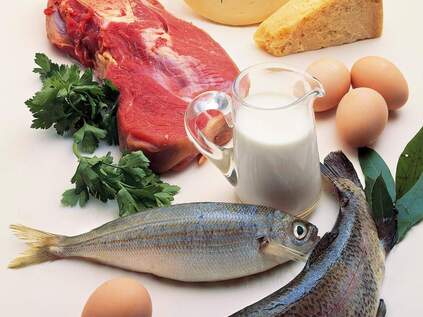 Choose Milk before Meat as it has a Greater Bioavailability Choose Milk before Meat as it has a Greater Bioavailability Debates over the goodness of a non-vegetarian diet in comparison to a vegetarian diet is unending and remains inconclusive. Though more and more people are becoming vegetarians these days with the evolution of an increased awareness on sustainable living and an interest to safeguard animals there still exists numerous pros and cons on taking up a vegetarian diet. Men have always loved meat as it establishes their masculinity, egg is the poor man’s door to health and chicken is indispensable during every occasion and function. Eliminating these from the diet routine and replacing them with equally nutritious vegetarian food remains a challenge to even the most health-conscious person. Among the common nutrients that are majorly present in animal-based foods vitamin B12 occupies a top spot. It is a commendable gesture from those individuals who leave back their favorite non-vegetarian routine and pursue a vegan/vegetarian diet but how are these people and those following a vegetarian diet right from start going to fulfill vitamin B12 requirements and meet the needs of all other nutrients too that are sometimes confined to animal sources? Firstly, we need to understand that there are replacements for almost all nutrients in a vegetarian diet and our job is to identify the exact one that suits our goals. Vitamin B12 & Our Health Vitamin B12 or cobalamin is an essential vitamin that’s required for DNA synthesis, nerve myelin integrity and production of healthy red blood cells. A lack of this vitamin can have multiple effects on the body such as weakness, anemia, dizziness, fatigue, weight loss, poor memory, soreness of the mouth and tongue and constipation. There are multiple circumstances under which an individual becomes a prey to vitamin B12 deficiency and this includes ageing, use of certain medications, gastrointestinal disorder and pursuing a vegan diet. The last reason remains vital and extremely critical as there are many individuals these days who are vegans eating a diet that’s devoid of eggs, meat, fish and dairy. These people are sure to develop vitamin B12 deficiency as they lack the inclusion of this nutrient in the diet. But this happens due to no mistake of theirs as there is no natural plant food that’s a natural source of vitamin B12. Vitamin B12 is something special here because it is produced only by bacteria and archaebacteria in the large intestine of animals when there is adequate cobalt supply. Among animal sources too, ruminants have a richer vitamin B12 content where the nutrient is absorbed in the ileum and stored in the liver and muscles or secreted in milk. Vitamin B12 is the only B vitamin that’s neither synthesized nor used by plants and its sole natural source is animal products such as eggs, cheese, poultry, meats and seafood. This makes it a great concern for vegetarians, especially vegans, whose diet is devoid of animal-based foods. Also, vegans/vegetarians consume more folate comparatively which can mask vitamin B12 deficiency. This prevents the early diagnosis of vitamin B12 deficiency and might also result in mild neurological damage. Vegetarian or non-vegetarian it is essential to know the reliable dietary sources of vitamin B12 that relate to plasma vitamin B12 concentration. One study showed that meat, fish and chicken were major sources due to the bioavailability of vitamin B12 in these foods. In another study researchers found that consuming fortified cereals and milk were good sources of this nutrient in 2999 individuals aged between 26 and 83 years. A Norwegian study on 5937 individuals showed that milk, dairy products and fish were positively linked to plasma vitamin B12 concentrations while another study showed that consumption of dairy and meat followed by fish and shellfish were good for vitamin B12 addition in the body while the same study showed that eggs intake was not significantly linked to serum vitamin B12 levels. Identifying the major sources of vitamin B12 with regard to dairy can help us study their effects on a vegetarian population. Major Sources of Vitamin B12 The study on major vitamin B12 sources included 728 participants with a median age of 58 among whom almost 65% were women. Diet intake was assessed using a dietary recall which included information on food, beverage and supplement intake. The intake recall was done on Saturday, Sunday and any one weekday and the same was repeated after 6 months. The average of the two recalls were taken to estimate mean daily vitamin B12 intake. Results showed that the highest sources of vitamin B12 was from milk and eggs, followed by milk alone, fish and meat. Younger age group individuals ate more from animal sources compared to older adults whose main vitamin B12 source were supplements and, women ate more fortified foods comparatively. The study showed that while supplements mainly contributed to vitamin B12 requirements in vegans and lacto-ovo-vegetarians, milk and dairy products were popular among those who did not use B12 supplements nor were in the habit of consuming other animal sources. Dairy as a Source of Vitamin B12 Vegetarians are found worldwide but in India lacto vegetarians make up more than 50% of the Indian population and are said to have very low quantity of vitamin B12 nutrient compared to non-vegetarians. Though this section of people consume milk the amount is not sufficient enough to improve vitamin B12 levels or it might also be that milk naturally has low levels of vitamin B12. A group of researchers in India wanted to know whether daily milk consumption could improve vitamin B12 status in vegetarians. The study consisted of 15 males and 36 females who were young, healthy, had completed their post-graduation, were not taking any B12 supplements and did not consume over 2 cups of milk daily. Pregnant women, non-vegetarians and lactose-intolerant individuals were not included. Blood samples from 10 participants (4 men and 6 women) were collected on day 1.These people and all other participants continued their regular diet for the next 14 days and on the 15th day blood samples of all 51 participants were taken, their plasma vitamin B12 concentration was measured and they were divided into two different groups namely normal and vitamin B-12 deficient. All the 51 participants drank 600 ml of non-enriched buffalo milk (200*3) during the day besides their regular diet and blood samples were collected the very next day for plasma holotranscobalamin II (holo-TC) measurements. Individuals belonging to the deficient group continued drinking 400 ml of milk daily for the next 14 days and blood samples were collected on the 30th day. Dietary recalls were taken by experts on day 1, day 15 and day 30 who recorded portion size and quantity consumed of the various foods that were rich in micronutrients. The research team split the foods rich in vitamin B12 and folate into four groups-milk milk-containing beverages, tea/coffee with milk, green leafy vegetables and other vegetables. Plasma holotranscoabalamin II (day-1, 15, 16, 30), vitamin B-12, folate, total homocysteine, creatinine and hematoloical parameters (day-1, 15, 30), and milk vitamin B-12 concentrations (day-15, 16, 30) measurements were noted down. Folate and vitamin B12 deficiency was defined as plasma concentrations <2 ng/ml and <148 pmol/L respectively, hyperhomocysteinemia as plasma tHcy concentrations >15 μ mol/L, low holo-TC concentrations as <35 pmol/L, anemia as a hemoglobin concentration <120 g/L in females and <130 g/L in males and macrocytosis as mean corpuscular volume > 100 fL. Results Male subjects consumed 1.1 μ g of vitamin B12 while female subjects consumed 1.35 μ g per day. Milk was the main source of B12 followed by yogurt. Tea/coffee with milk also was commonly seen in the participants’ dietary recall list. Results showed that:
References Food and Supplements Associated with Vitamin B12 Biomarkers among Vegetarian and Non-vegetarian Participants: https://www.ncbi.nlm.nih.gov/pmc/articles/PMC6024521/ Daily Milk Intake Improves Vitamin B12 Status in Young Vegetarian Indians: https://nutritionj.biomedcentral.com/articles/10.1186/1475-2891-12-136 Vitamin B12 and Vegetarian Diets: https://www.health.harvard.edu/vitamins-and-supplements/getting-enough-vitamin-b12  Green Tea is Touted for its Antioxidant Property Green Tea is Touted for its Antioxidant Property Tea and coffee are staple beverages in Asia, especially in our country. We love to sit down every evening with a hot flask of ‘garam’ chai and some pakoras to spend our day leisurely enjoying the cool breeze and the sunset. Tea is preferred by those suffering from a bad cold, runny nose or even helps in alleviating tiredness and sleepiness. Isn’t it common to see men and women visit the cafeteria for a cup of steaming coffee or tea every once in a while to revitalize themselves and keep the energy pumped up? Besides these, tea is also used as a medication based on experience. Of late, individuals have adopted a healthier lifestyle trying to reduce their calorie intake to stay fit and be in shape. Many of them love to sip on a mug of hot green tea which is also one of the most popular beverages in Asian countries! Green tea comes in various flavors and one is surely amazed by the variety available-herbal and flower-based green teas including chamomile, jasmine, rose, marigold, hibiscus and more have captured the hearts of people with their subtle yet impeccable flavor. Every restaurant almost has green tea in its menu alongside the regular coffee and tea. Even kids don’t mind indulging in a cup of green tea containing lemon and honey. How has the world which was once behind creamy lattes, sugary coffees and masala chai divert its attention to a watery beverage that contains nothing but the essence and flavor of the tea leaves picked from the hilly regions of cities? Green tea contains numerous polyphenols called catechins (tea leaves contain 10-20% catechins) the most popular among them including epigallocatechin gallate (EGCg), epicatechin gallate (ECg), gallocatechin gallate (GCg), epicatechin (EC) and their thermal isomers including catechin (C), catechin gallate (Cg), gallocatechin (GC) and gallocatechin gallate (GCg). These tea catechins are said to behold advantageous properties including antioxidant, anticancer, antidiabetic and antiatherogenic activities. Its been seen that consumption of green tea catechins (GTC) inhibit diet-induced obesity (DIO) in mice and also reduce body weight and visceral fat area (VFA) in humans. Some studies reveal that GTC have an anti-obesity effect by stimulating fat oxidation, modulation of adipogenesis, decreased fat synthesis, inhibition of digestive enzyme activity and nutrient absorption. There are also numerous studies whose focus on catechin’s antioxidant and anti-cancer properties showed that green tea is extremely effective against heart disease. The world is growing in size and the residents are becoming fatter paving way for an obesity epidemic. Its been shown that obesity rates have tripled since 1975, there are more than 1.9 billion adults who are overweight of which at least 600 million were obese (13% of the world’s population is obese). Excess accumulation of body fat in the abdominal region such as in the case of abdominal obesity can increase the risk of metabolic disorders. Obesity is generally classified into visceral and subcutaneous according to fat distribution. Visceral fat is the dangerous one as it lines internal organs, is an independent mortality predictor in men and plays a critical role in the development of metabolic syndrome (MetS). There are studies showing that continuous consumption of GTC-containing beverage (>540 mg/day) by obese/overweight men and women reduced body fat and visceral fat area (VFA). But we don’t have trials and studies that have evaluated the effect of continuous GTC intake on reduction MetS risk in a large study population. We might have studies showing that total fat area (TFA) along with VFA increases risk of MetS but what we lack is clear evidence as to whether reduction in VFA and TFA due to GTC intake is related to MetS risk reduction. A research team did a post-hoc pooled analyses of data that helped to understand the effect of regular GTC intake on abdominal fat reduction and MetS improvement. Post-Hoc Pooled Analysis The research team selected studies that met their different requirement criteria and finally six trials were included. A post-hoc analysis was performed in each of them. Each of the studies had a different GTC quantity and thus all the subjects were assigned to a daily dose of 540 mg/day to 588 mg/day GTC depending on their GTC amount consumed by the subjects in their respective studies. In one Japanese study people reported a huge difference in mortality rates due to consumption of at least five cups of green tea daily. Every cup of green tea contains almost 100 mg catechins and hence those who consumed at least 500 mg/day of catechins were marked as the high catechin (HC) group and those who consumed less than that were marked as the low catechin (LC) group. There were altogether 921 subjects involved from the six selected trials. Though sex, age, height, weight, BMI, waist circumference, VFA, TFA and SFA were not significantly different between groups mean GTC was 35 mg/day in the LC group, 563 mg/day in the HC group and triglyceride (TG) and fasting blood sugar (FBS) values were significantly higher in the HC group than in the LC group. 20.5% and 18.1% subjects were Pre-MetS and MetS in the LC group while in the HC group it was 21% and 20.1% respectively. Body weight and BMI were significantly lesser than baseline in the HC group; Body weight and BMI were both lower in the HC group than in the LC group. Coming to abdominal fat, TFA, VFA and SFA were lower than baseline only in the HC group and the reducing in these values were significantly greater in the HC group compared to the LC group. TG and HCL did not decrease significantly from baseline in both the groups and there was no significant difference between the two groups. FBS significantly differed from baseline in the HC group but there was no difference between the two groups. Systolic blood pressure (SBP) significantly decreased from baseline only in the HC group and also, there was greater decrease witnessed in the HC group compared to the LC group. Diastolic blood pressure (DBS) decreased significantly from baseline in the HC group but there was no difference witnessed between the groups. Subclass Analyses of Pre-MetS and MetS Individuals In order to find the effectiveness of GTC in improving obesity/abdominal fat in subjects with pre-MetS or MetS 368 subjects (218 men and 150 women) were chosen. Here, body weight, BMI, waist circumference, TFA, VFA and SFA decreased from baseline only in the HC group and also the difference was significantly more in the HC group compared to LC. FBS and SBP decreased from baseline only in the HC group, TG and HCL did not decrease from baseline in the HC group and TG alone significantly decreased from baseline in the LC group. In terms of improvement, the proportion of subjects who improved from Pre-MetS to healthy and from MetS to healthy or Pre-MetS showed improvements in 30.2% subjects in the LC group and 41.5% subjects in the HC group. Subclass Analyses Based on Changes in Abdominal Fat Accumulation in the HC Group Regular consumption of GTC-containing beverages reduced body weight and abdominal fat area while improving MetS status. The Pre-MetS and MetS subjects in the HC group were further split into two groups where the first group was those containing individuals whose consumption of GTC-containing beverage reduced TFA, VFA and SFA (reduced group) and another group where these parameters did not reduce (non-reduced group). VFA and SFA significantly reduced in the TFA-reduced group comparatively; Body weight, BMI, waist circumference, FBS and SBP decreased significantly from baseline but there was no significant difference compared to the non TFA-reduced group. TG, HDL and DBP did not see significant difference compared to baseline in either group. Improvement rate from Pre-MetS to healthy and from MetS to healthy was 23.8% in the non TFA-reduced group and 46.6% in the TFA reduced group. Subjects were once again classified into VFA-reduced and non-VFA reduced groups and their results compared. There was significant decrease in body weight, BMI, weight circumference, TFA, VFA, SFA and FBS from baseline in the VFA-reduced group but no change from baseline seen for TG, HDL, SBP and DBP. MetS improved by 18.9% in the non VFA-reduced group and by 50.4% in the VFA-reduced group. Comparison between the non SFA-reduced and SFA reduced groups showed that there was a significant reduction in FBS from baseline in the SFA-reduced group compared to non-SFA reduced group but there was no difference seen in other parameters between the two groups. The combined analysis of the six trials shows that consumption of GTC-containing beverages reduced abdominal fat accumulation, improved metabolism-related parameters and also reduced the number of subjects classified as MetS. Exercise-induced Abdominal Fat Loss in Obese/Overweight Adults A randomized, double-blind study was conducted to evaluate the effects of green tea catechin-containing beverage on body composition and fat distribution in overweight and obese adults. Participants were chosen based on several criteria: healthy, sedentary individuals aged between 21 and 65 years having a waist circumference ≥87 cm (in women) and ≥90 cm (in men). All the participants were put into one of the two groups-the control group or the active beverage group where each person received 500 mL/d (contained 63 kJ of energy and 250 mg of sodium) of some beverage providing ~625 mg catechins. All of them were asked to drink one 500 ml bottle daily within 30 min anytime of the day with or without food. All the participants were instructed to increase their activity to ≥180 min/week of moderate-intensity activity and attend at least 3 supervised exercise sessions per week. Though the study included 128 participants 21 of them did not complete the study due to several reasons. Mean BMI was 32 and mean age ~48 years. Results showed that:
Efficacy of Tea Catechin-rich Beverages to Reduce Abdominal Adiposity and Metabolic Syndrome Risks in Obese and Overweight Subjects: https://www.sciencedirect.com/science/article/pii/S0271531717305444 Green Tea Catechin Consumption Enhances Exercise-Induced Abdominal Fat Loss in Overweight & Obese Adults: https://academic.oup.com/jn/article/139/2/264/4750912 A Green Tea Extract High in Catechins Reduces Body Fat & Cardiovascular Risks in Humans: http://citeseerx.ist.psu.edu/viewdoc/download?doi=10.1.1.1032.4079&rep=rep1&type=pdf |
AVOID FRAUD. EAT SMART+91 7846 800 800
|
- Home
- Written Testimonials
- Consult
- Clinics
- Blogs
-
Diet & Nutrition
- Diabetes Reversal
- IVF IUI not needed for PCOS PCOD Infertility
-
Medical Nutrition
>
-
Disease & Conditions
>
- Infertility | PCOS
- Diabetes Mellitus
- Cholesterol
- Hypothyroid
- Kidney Problems
- Hypertension
- Cardiovascular Diseases
- Liver Diseases
- Gastro intestinal disorder
- Cancer
- Metabolic Disorders
- Orthopedic Disorders
- Eating Disorders
- Dietary Recall
- Weight Record Filled By Clients
- Online Payment Transaction Details
- Online Clients Weight Check Form
- Our Program Package Service Charges
- Weight Record 2017 Clients
- Measurements sent by Clients
- Terms & Conditions Of Payment
- Thanks. Your Form is Submitted
- Video Testimonials
- Lifestyle & Wellness
- Lifestyle & Wellness Blog
- Allergy & Intolerance
- Weight Loss / Gain
- Weight Loss / Slimming Blog
-
Disease & Conditions
>
- Life Cycle Nutrition >
- Sports Nutrition >
- Integrity in Nutrition
- Knowledge Centre
© COPYRIGHT 2022. ALL RIGHTS RESERVED. FRST HEALTHCARE PVT LTD.
Dr. Nafeesa Imteyaz of First Eat Right clinic, is the Best Dietitian Nutritionist in Bangalore. Best Dietitian Nutritionist in Pune. Best Dietitian Nutritionist in Hyderabad. Best Dietitian Nutritionist in Chennai. Best Dietitian Nutritionist in Mumbai. Best Dietitian Nutritionist in Delhi. Best Dietitian Nutritionist in Kolkata.


